#Cheap air tickets to Ho Chi Minh City
Explore tagged Tumblr posts
Text
Travel guide for first-time visitors to Singapore
The open-door policy along with cultural similarities make Singapore still an attractive and frequent destination for Vietnamese tourists. The Lion Island is a place of meeting and harmony of diverse cultures such as China, India and Malaysia,
giving visitors unforgettable experiences when booking tickets to Singapore EVA Air during the upcoming holidays. arrive. https://trithucdulich.blogspot.com/ To make your trip to explore this beautiful island nation more interesting and ideal, prepare for yourself the latest Singapore travel guide. https://tintuctourdulich.blogspot.com/ Korean Air Vietnam Office in Ho Chi Minh City ☎ 02839251759 - 02839256479 ✔️Refund tickets ☀️ Book cheap air tickets to the US, Canada, and Korea. And Eva Air office, Eva Airlines Vietnam tickets ☎ (028) 3925 6479 - (028)39251759 ☀Address: 69 Võ Thị Sáu, Đa Kao, District 1, Ho Chi Minh City
0 notes
Text
How to keep the cost down to visit Danang in 4 days
Danang is one of the most famous beach cities in Vietnam. Danang possesses beautiful beaches, fresh space and developed infrastructure with many famous attractions. A trip to Danang promises to bring you more memorable experiences, you need to make a detailed itinerary to optimize your time and budget. Cheap Vietnam tour. In this article we will give you full information about how much it costs to plan a trip to Danang by yourself.

How to get to Da Nang To get to the city, you can choose the following types of transport:
Airplane: The preferred mode of transport, it only takes 1 - 2 hours for you to travel from Hanoi or Ho Chi Minh City to Da Nang. Some airlines have flights with relatively reasonable prices such as: Viet jet Air, Vietnam Airlines, Bamboo Airways…
Passenger bus: Suitable for tourists to travel short distances, the price is also much cheaper than flights. Some bus companies serving trips to Da Nang include Mai Linh, Hoang Long, Phuong Trang.
Train: The choice for those who suffer from motion sickness, in return you can admire the scenery through the train window and travel freely. Fares will also depend on the distance and type of seat you choose.
Recommended itinerary for 4 days 3 nights in Danang Even though you have 4 days in Da Nang, to explore everything in this city, you still need a specific schedule. If you don't know how to go, you can take a look at the itinerary below.
Day 1 Danang arrival - Marble Mountains - Son Tra Peninsula - Hoi An ancient town After arrival at the hotel to rest and eat, you can rent a motorbike at your hotel (if available) and visit Son Tra peninsula In the afternoon, you can return to Ngu Hanh Son and visit Non Nuoc stone village. The last destination and should be reached between 5:00 and 5:30 pm is Hoi An ancient town. At this time, the city's lights are very sparkling and poetic. At around 10:00 pm, you can leave Hoi An and return to Da Nang to rest to prepare for the 2nd day.
Day 2 Ba Na hills After breakfast, prepare your luggage and depart for Ba Na Hill. Because Ba Na Hill is very large, you should spend a whole day here to be able to explore everything. Around 4:30 p.m., you can leave Ba Na, start exploring the city at night, explore famous markets such as Son Tra night market, Helio night market… If it falls on the weekend, you can also see the Dragon blows fire, visit the Han River rotating bridge which turns around 180 degrees.
Day 3: Options to explore Cu Lao Cham, Hue or Than Tai Mountain On day 3, you can choose to explore Cu Lao Cham with extremely attractive coral diving. You can also go to Than Tai Mountain and soak in the natural hot mineral stream to heal all fatigue. Further, you can go to Hue, the capital of mausoleums and famous Ao Dai long dress. Don't forget to eat some Hue specialties, drink salted coffee and watch Truong Tien Bridge across the banks of the romantic Perfume River.
Day 4: Sightseeing around the city center On the last day of your trip, you can spend your time going to main attractions in the city. That could be shopping at Con market, Han market or Bac My An market. It can be an experience with many adventurous but extremely enjoyable activities at Hoa Phu Thanh waterfall. Or enjoy VinWonders Nam Hoi An with many exciting entertainment.
Cost of traveling to Da Nang for 4 days and 3 nights Below are the expected costs for a 4-day, 3-night trip to Da Nang:
Travel costs: Depends on departure location and means of transportation. For those from Ho Chi Minh City, the expected cost is about 2,500,000 VND (aprox 100 USD). If you go by passengers bus it costs around 500,000 VND (20 USD). For the overnight train it costs aprox 600.000 VND (25 USD) for a soft berth.
Hotel costs: 3-star hotels in Da Nang cost from 500,000 - 800,000 VND/night, if you choose a high-end hotel, the cost is higher.
Cost of renting a car, buying tickets for sightseeing and entertainment: About 1,000,000 - 2,000,000 VND/person
Food and drinks: About 10 USD/person/meal
Source: https://cheapvietnamtour.com/blog/how-much-it-costs-for-a-4-day-3-night-trip-to-danang-by-yourself.php
0 notes
Link

#travel#Cheap tickets to Ho Chi Minh City#Cheap flights to Ho Chi Minh City#Cheap tickets to Ho Chi Minh City from UK#Cheap air tickets to Ho Chi Minh City
0 notes
Text
Goodnight Saigon, It's a Holiday in Cambodia
We spent our final hours in Vietnam this morning. What a country. We gorged on our hotel breakfast, eating as if we would never see such great fruit ever again. While we knew that wasn't true, "The Myst Dong Khoi" hotel treated us right and made our stay in Ho Chi Minh City extra special.
We made one final stop at the Ben Thanh market. Alex picked up his suit. It looked AMAZING. We also grabbed over a kilogram of mango candy to take home for family, colleagues, and students to enjoy. On our way out, we picked up a quick snack of Banh Gio, which we thought was sticky rice. But we were wrong! It was a steamed rice cake stuffed with pork and other stuff that we weren't sure quite what it was. But it was tasty! The whole thing came wrapped in a big banana leaf and cost less than a dollar. Amazing country.
We got our snack mostly to kill time because we just had to go back to Banh Mi Hyunh Hoa for a sandwich for the road aka our flight. The only meal (other than hotel breakfasts) that we had twice. We booked one last taxi to the hotel and relished in the fact that it was a Chevy Spark. It was a tender bonding moment to try and communicate with our driver, explaining that we had the same car. "It's cheap!" He said. We all laughed. It's funny because it's true.
We packed up, and left Vietnam. When we arrived, we realized we made a near-fatal mistake. We actually never confirmed our flight out of HCMC to Cambodia. It was a close call, but we actually bought tickets that afternoon, for a flight scheduled to leave three hours later! Oopsies! But it all worked out as we boarded the flight to Cambodia.
The flight took less than an hour, and was fairly smooth. Our seatmate came from Arizona but actually grew up in Poughkeepsie, NY! Small world. We landed on a wide runway and walked into a unique airport that adopted Indochinese architecture, not unlike our previous hotel. We thought a car was waiting for us outside, but no, it was a motorized Tuk Tuk! We rode on the back of a cart, zooming through the Cambodian night. It was not what we expected. We expected a city but Siem Reap is quiet and rural. We were so used to such loud noises and cars so it was a bit of a shock to be in such a quiet place.
We began our stay at the Baby Elephant Boutique Hotel, a wonderful Cambodian resort that resembled a bed and breakfast more than anything else. We were served welcome drinks, as well as attention from Happy, the four-legged welcome committee. He was very friendly! Once we unpacked in the room it was time to go back out into town for dinner. Siem Reap is not a culinary destination, however, there was a Khmer restaurant on the top of every Internet list, and was the only restaurant we saw with a wait.
The homely restaurant had about thirty tables in it's open air concept, and the wait staff, made up of young women, all were incredibly friendly and happy to have customers. We ordered two traditional dishes: Amok, a green curry with lemongrass and Thai basil flavors, served in a banana leaf, and Lok Luk, a saucy mix of beef, veggies and a fried egg, accompanied with a peppery sauce. We rounded our order with a Cambodian beer and ate quickly. The food was delicious and flavorful, giving us a good feeling of what Cambodia could possibly offer. Even if it wasn't half as good as our banh mi from earlier, we cleaned our plates, and saved room for dessert. Mango sticky rice! The mango was soft and chewy. The rice was sweet. It was a terrific end to the meal.
We took a roundabout way back to the hotel, hopping into the market, where we picked up some of the peppercorns that made up the Lok Luk sauce, and then peeked into "pub street," which was Siem Reap's version of Bourbon Street.
We had heard about crowds in Cambodia but the only signs of life came on Pub Street. This city, if we can call it a city, has been decimated by COVID, as lockdowns eviscerated the flourishing tourism scene, which seems to be recovering slowly. Everyone spoke English here and most of the restaurants served Western food. It's more common to see pizza instead of curry, and any hint of traditional Cambodian cuisine has been painted over by Thai flavors to give the customers a taste they may be more familiar with. It's not the most heartening sight to see in a country that has already endured hardship, tragedy in the form of its own genocide, but the draw to Siem Reap is not the food or nightlife, but the temples, which we will get up to see tomorrow.
Alex: Rach we made it to the Kingdom of Cambodia. The doorway to the ancient wonders of the world. How do you feel? It's a little different here than the big city, huh?
Rachel: Very different. I think that we are staying a little further from many of the huge hotels and it feels very very rural. It's not true because just a half mile away is the downtown area of Siem Reap. With that being said, the downtown area has less people than any given block in Ho Chi Minh City.
A: While this is like a big change, I actually think it's a blessing in disguise and we'll have a lot of space tomorrow to relax and go to all the temples and not have to wade through crowds.
R: I am VERY excited to see all the temples and add another wonder if the world to my very short list.
A: This is the second ancient civilization we'll have visited together, the first being Mayan temples in Belize. I liked how we got to climb those steps and hope we can have a bit of a hands on experience to really feel immersed in the spiritual atmosphere. Everything about the Cambodian and Khmer civilization has been fascinating to me.
R: And I was happy that we could start it all with Khmer food, including a delicious curry, a unique tomato dish, and finishing off with some mango sticky rice too.
A: While I know the food won't be as good as Vietnam I know our experience tomorrow will really make up for it.


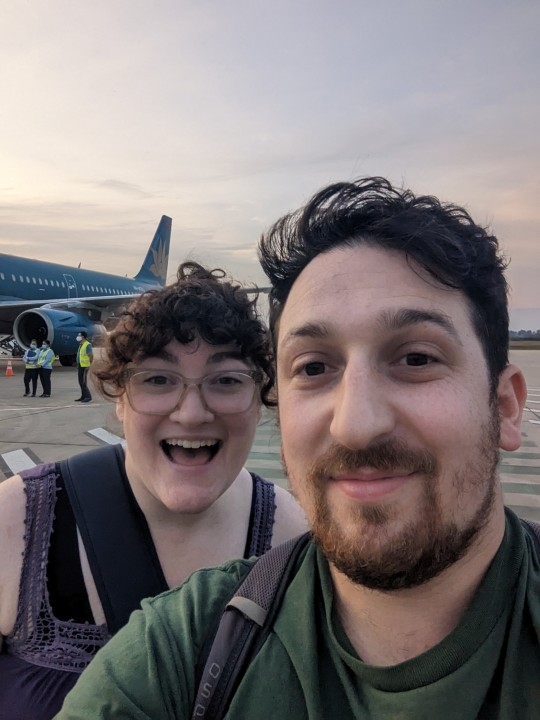
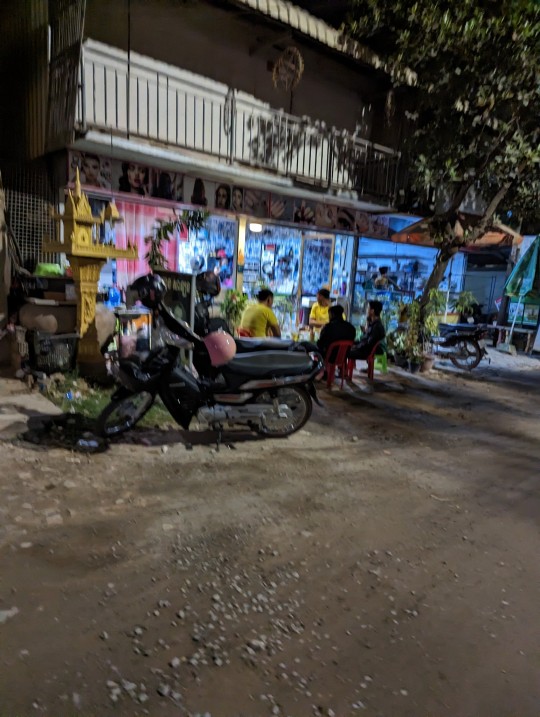





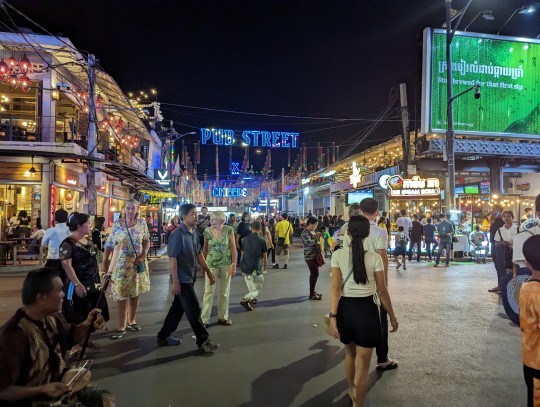
0 notes
Text
How to get to Ben Tre from Ho Chi Minh City
Though Ben Tre is only 85 km to the west of Ho Chi Minh City, How to get to Ben Tre from Ho Chi Minh City has a lot of tourists confused when researching transportation. Information on many online travel platforms or websites seem to be very general and sometimes outdated. Some websites may even suggest that the easiest and cheapest way to do it is to buy a tour from a travel agent in Ho Chi Minh City. This may be an easier option, but an adventurous wanderer will surely not fancy spending time on a tour bus, cramming in as many towns as possible, and eating in the prescribed restaurants.
Being a local from Ben Tre, I believe there are plenty of alternatives that would help you create a memorable experience. In this blog, I will list all means of transportation that the local people usually use to get to Ben Tre from Ho Chi Minh City. You can get there by Bus, Taxi, Car Rental, or Grab. You may get into some trouble communicating with the locals as most people in Ben Tre cannot speak English. Learn how these transportation services operate and plan your trip carefully before you go to avoid language barrier issues!
Bus
Catching a bus is the most suitable for people who are on a budget to get to Ben Tre. On average, there is a bus from Ho Chi Minh City to Ben Tre every 15 minutes a day. It takes 2 hours to travel from Ho Chi Minh City to the city center of Ben Tre by bus. The earliest bus departs at 6:00 AM and the last bus going to Ben Tre is 7:00 PM. The bus ticket price is very affordable, ranging from $3 to $5 depending on the type of seat and transportation company. If you travel during some national holidays in Vietnam, the price may slightly increase to $7 but it’s not significant. All buses have air-conditioning and most provide free wifi. Despite the cheap fare, buses to Ben Tre have some drawbacks. It will be slower than other transportation as the on the way to Ben Tre the bus will make multiple stops to let off guests during the trip. Once you arrive at the bus stop, you have to transfer to a transit mini car to drive you to different spots around Ben Tre City.
There are two ways you can catch a bus to Ben Tre. If you can speak some Vietnamese, you can call the hotline to book a ticket and ask to be picked up anywhere in Ho Chi Minh City. If your place is further than 5 km from the bus station, they will charge you $1 more for a transit car to the bus station. If your pick up location is on the way to Ben Tre, it’s free of transit charge. On the way to Ben Tre, the bus will stop at a bakery. The driver will collect bus fare and the passengers can buy some food or go to the toilet before reaching the highway to Ben Tre. Remember to keep the ticket that you have already paid for at the bus station and give it to the driver. If you haven’t purchased your ticket yet, you have to pay the fare by cash to the driver.
You can also go directly to the bus station to buy a ticket and get on the bus there. Each bus company has its own bus station in the center of Ho Chi Minh City, which is the bus departure place. But you can also buy a ticket at Mien Tay bus station at 395 Kinh Duong Vuong Street in Binh Tan District. All bus companies have a ticket office there.
Some recommended bus services are listed as follows:
Thinh Phat
Website: thinhphatbentre.com
Address: 25A Su Van Hanh Street, Ward 9, District 5, Ho Chi Minh City
Contact: (028) 38303042 – (028) 38393625 – 0913965050
Minh Tam
Website: xekhachminhtam.com
Address: 204C Su Van Hanh Street, Ward 9, District 5, Ho Chi Minh City
Contact: (028) 38306106 - 0948222207
Hoang Khai
Website: www.hoangkhaibentre.com
Address: 50 Nguyen Chi Thanh Street, Ward 2, District 10, Ho Chi Minh City
Contact: (028) 38353953 - 0902340452
Thao Chau
Website: thaochautour.com
Address: 70B Hung Vuong Street, Ward 9, District 5, Ho Chi Minh City
Contact: (028) 38339954
FUTA Bus Line
Website: futabus.vn
Address: 395 Kinh Duong Vuong Street, An Lac Ward, Binh Tan District
Contact: 19006067
If you want to arrive in a different part of Ben Tre rather than the city center, you should ask the driver to drop you off at the Ben Tre bus station. From there take a different bus to your destination. Some bus services also offer you drop off in other parts of town but there are fewer departure times than those arriving at the city center.
Grab, Taxi, or Car
If you travel in a group of 4 or more, this option will save you a lot of money. With the rapid growth of Grab and its widespread network and diverse services, it is easy to take a Grab car to Ben Tre. The car fare will be around $48 for a 4-seat car ride and $57 for a 7-seat car ride from Ho Chi Minh City to Ben Tre. Grab is very convenient as you have all the information about the fare and driver in the app. You can pay by either cash or card via the Grab app, which the bus service doesn’t have. It’s also faster than travelling by bus as your car will arrive at the exact address you request. But of course, it will cost you more. Also, you should take into account that your Grab car is a random one so it may not meet your expectation about the cleanliness, the driver’s behavior, or the comfort of the seats.
Another option is taking a taxi. There are plenty of taxi services to get to Ben Tre but the most popular are Mai Linh Taxi and Vinasun Taxi. These two are among the first traditional taxi services in Vietnam. The fare may fluctuate between $55 and $70. You can call the taxi hotline to pick you up at your place and ask for the fare in advance. For a long ride, they often give you a price deal instead of a taxi fare calculator. Also, both of these taxi services have their own app like Grab for your reference. You can download on App Store or Google Play by searching the name of taxi.
Mai Linh Taxi
Website: mailinh.vn
Contact: (028) 38277979
Vinasun Taxi
Website: www.vinasuntaxi.com
Contact: (028) 38272727
A much more comfortable service than Grab or taxi is renting a private car. With this transportation, you can be sure of the quality of the car and the person in charge if there is any incident. This is the most expensive means of transportation to get to Ben Tre from Ho Chi Minh city, but brings you the best comfort and convenience. You need to book the car at least 3 days prior to your trip so that the car company can arrange to offer you the best price and service. Some of the car rental services you can consider are:
Congtythuexe.com
Website: congtythuexe.com
Contact: 0941122211 – 0937711777 – 0922456678 - (028) 22667711
Fare: $61 (4-seat car); $66 (7-seat car); $79 (16-seat car)
ibookcar.com
Website: ibookcar.com
Contact: 0933370114 - 0868713318
Fare for one-way car:
4-seat car fare = number of kilometer x $0.35 + $17.4
7-seat car fare = number of kilometer x $0.35 + $21.7
Fare for round-trip car:
4-seat car fare = number of kilometer x $0.17 + $30.4
7-seat car fare = number of kilometer x $0.17 + $39.1
These are ways that you can get to Ben Tre without relying on a tour. Whether you choose to take a bus, car, grab, or taxi, I hope your trip to my hometown is one you’ll always cherish and remember. I hope you found my blog helpful and are able to plan your ideal trip to Ben Tre.
Learn More
Read More Here: How to get to Ben Tre from Ho Chi Minh City
0 notes
Text
I left the school I worked at in Vietnam to start a new journey backpacking Japan, visiting my family in Singapore, and to live and teach in Taiwan. I didn’t dislike Vietnam but couldn’t get past some of the cons that made me not want to extend my stay past my fifteen months of living in Ho Chi Minh City.
Some of the things I do and don’t miss about living in Ho Chi Minh City, Vietnam:
The corruption: My temporary residence card was a piece of crap to begin with. It cost me well over $100 and was simply a cheap quality business card that had my photo laid on top and laminated. The seal was uneven and already breaking after just a few weeks in my wallet. So, I tried to double laminate it like a stubborn fool only for it to get bizarrely stuck in the laminator and come out looking like this. As a result, I tried several different ways to leave Vietnam from trying to purchase an exit visa, paying a bribe, and hiring a man who specialized in immigration issues such as this. In the end, the only method that worked was ironically getting help from a friend’s, whose dog I was fostering, cousin who worked for immigration. He simply met me at the airport, talked to immigration for maybe one minute, and waved me through hundreds of people queued in immigration and security. Literally he instructed me to go to the staff lines, which were empty, while hundreds of people waited in the regular lines. Each employee would look at me confused, I’d point to him, he’d give a thumbs up and a nod, and they would wave me through without a second thought. It was the most impressive thing I’ve seen in a long time.The pollution: My neighborhood in district seven was among the cleanest in Ho Chi Minh City, which isn’t saying much frankly, but I still never got used to waking up and seeing smog that would conceal the sky. I ended up getting a Vietnam “cough���, something a lot of expats initially develop from the exposure to pollution and are left with no choice but to either get used to it or leave. I was missing fresh clean air and nature more than I ever imagined to the point that every holiday I took I would go somewhere with mountains or beaches or both. Fresh air is something I’ll never take for granted again. The flooding: There’s nothing more comical than watching a horde of people with their feet on the panhandles of their bikes, going a kilometer an hour, and doing everything in their power not to come to a complete stop as that would cause them to have to put their leg, sometimes thigh deep or more, in the dirty flood waters that have nowhere to go due to the poor sewage system which is regularly clogged by locals uncaringly sweeping their into the drains. It was also unpleasant to be driving to work or the gym and experience a mild drizzle turn into a full on flash flood within five minutes. Many people wear heavy raincoats while driving, as umbrellas aren’t rational, even when walking due to the strong winds. However, people typically still bring an extra outfit in their bag or wear shorts and flip flops to avoid being stuck in wet clothes the entire day.
My students:My neighborhood, Phu My Hung:An unfortunate quick stop to Singapore: I reluctantly took a trip to see my mom and her side of the family in Singapore for my birthday prior to going on a three week holiday to Japan. I was fighting a serious case of homesickness and had contemplated going back home for my holiday instead of Japan. However, after spending three days with my family I couldn’t wait to say goodbye and move on to the next adventure. Aside from a nice birthday dinner and some much appreciated birthday gifts, I was all but forgotten. No one wanted to go out to eat, I ended up getting sick again, and every conversation went to gossiping about people or questioning my every life action. “What are you going to do after you’re done teaching?” “How are you qualified to teach social studies?” “What’s this? Why are you growing a beard?” “If you don’t like it you can go eat somewhere else!” It’s been a long time since I’ve been around people who made me feel so alone and small and I attribute my coldness and lack of trust to my undesired experiences and interactions with a fair amount of my family. To them it’s normal, to me it’s something I would never tolerate from any other persons. I chalk it up to different cultures but also to a lack of understanding from both sides of my family. I’ve never been understood and people can seldom relate to me, I ultimately think it attests for a lot of my loner mentality and lack of emotions.
Fair warning Singapore is a fun place but definitely strict when it comes to drugs. If you want a party beyond alcohol, don’t come to Singapore or try your luck in Geylang.The view from my grandmother’s apartment in Braddell Place.Six different currencies I’ve managed to collect overtime. Thai baht, US dollars, Japanese yen, Malaysian ringgit, Singaporean dollars, and Vietnamese dong. (From left to right, top to bottom.)Osaka Food Market: The seafood market was easily the best and my favorite out of the three I visited in Japan. Some of my favorites of the foods I tried were Kobe beefsteak, raw sea urchins, and fresh fire-roasted scallops.
Osaka’s Streets: Osaka is absurdly clean and people follow every traffic rule there is. No one j-walks, no one loiters, and everybody is helpful and courteous despite the language barrier. In Japanese culture it is rude to stare and common courtesy is expected such as holding the door out for someone, allowing someone in a hurry to pass you by, and to greet and thank customers and patrons habitually. That being said, a lot of Japanese will still see foreigners as outsiders, especially if they do not speak Japanese. Meaning just because they are polite to you does not necessarily mean they care or want to know about you.
My regular traditional Japanese Food: Sushi and dumplings.A Guilty Pleasure: I go to a McDonalds in every country I visit because it’s always a little different from the menu to the seating. Japanese McDonalds have bacon lettuce burgers, teriyaki chicken fillets, and double beef and egg burgers for example.Vending Machines: Vending machines are sprawled out everywhere, literally every block has one. From soda to coffee to beer and even ice cream. There are very few things, especially beverages that you can’t find in vending machines in Japan.
Trains: Japan has a lot of conveniences such as toilets and breastfeeding rooms everywhere for the self-explanatory. Trains are definitely one of those conveniences offering different trains like local, sub-express, and limited express. The system is a bit confusing but there are some conveinces to help you such as maps posted every where, machine for route finders and fare adjustments, and there is almost always a tenant who speaks reasonable English at every ticketing queue.
My first experience on the train in Osaka I followed Google maps which took me on an unnecessarily longer route. I showed the ticket tenant my ticket and asked if my directions were accurate. He literally gave me my money back, bought a new, cheaper ticket, and walked me to the right line, stop, and told me when and where to get off. I had never been so thankful or respectful of someone’s courtesy and helpfulness.
7th Eleven: These are everywhere as well in Japan and offer some of the freshest meals as well ass an exceptional variety of beverages.
Toilets: Something I have to admit I miss about Japan is the toilets. The seats automatically lift up and down and there is always a set of buttons that allow you to control music, clean the toilet for you, a bidet with adjustable buttons for the spray strength and temperature. It became one of those weird things where you actually looked forward to using the toilet.
Traditional housing in Japan: Oddities: For whatever reason Japanese people love Spam, they literally have flavors I didn’t even know existed. Nightlife: Osaka has a thriving nightlife from strip clubs to highball bars to British pubs. People in Osaka are generally more open and friendly towards expats whereas many Japanese can be particularly cold to foreigners. For example, many foreigners who have tattoos are not allowed into saunas, gyms, and springs unless they find a way to cover them up. Also, many foreigners are politely unwelcome at restaurants or bars simply because they are foreigners as well as aren’t fluent in Japanese. They’ll be politely told we are closed or full.
I experienced all these things in a variety of way such as being told at a hookah bar in Kyoto that they were full, until they saw my Japanese girlfriend and magically two seats became available. I also booked a hotel in Tokyo with a Taiwanese girl who spoke Japanese and laughed when a sign posted read:
The famous Glico Running Man:
Highballs & Sake: Highballs, which are basically tall cocktails comprised of liquor, normally whiskey and a lot of club soda. At first, this drink seemed unappealing to me as I prefer whiskey on the rocks or neat, but overtime they grew on me and I ended up having numerous highballs over my time in Japan.
Sake, on the other hand, is something to be either taken as a shot or sipped and enjoyed. A general rule of thumb is that quality sake is served cold where has lower tiers are served warm. I had the pleasure of trying a variety at various bars and have to admit I became a fan of aged Suntory whiskeys.
To politely cheers in Japan you should either pour your sake bottle or be holding your sake glass with two hands to receive your sake. You should also cheers lower than the person you are cheering with.
Japan isn’t cheap to eat or drink out at and one should expect to spend around 600-700 (around $6) for a standard beer at a bar.
Hookah in Japan: I fell in love with smoking Japanese shisha in Japan because it was something cheaper, social, and I wouldn’t be comatose in bed the next day. I also happened to Casanova my way into charming a female employee who gave me quite the hook up.Traditional Japanese Eateries: What I loved about the neighborhood, Tennoji, that I stayed at in Osaka was the variety of traditional eateries a short walk down the street form my hostel. The language barrier was difficult at first as I didn’t learn how to say useful phrases such as, “one please” “thank you” or “excuse me” until after a week of practicing in Japan. I relied on Google translate, pointing at pictures, and the dumb luck of having an occasional English speaking server or chef.
Osaka Castle: Is it touristy? Yes. Is it worth it? Hell yes.
Nature and weather during summer’s June: All over fellow travel blogs and travel websites I heard that June was the worst month to visit Japan due to the lack of blooming cherry blossoms and the unfortunate rainy season. However, of the three weeks I spent in various cities in Japan it only rained, and mildly at that, a fraction of the time. There was no flooding, no heavy rain, and no thunder or lightning. A simple umbrella and you can get around no problem. As far as nature goes, there is a bit of a lack of variety in color but there are still plenty of flowers and everything is very green and pleasant to see nonetheless. Many flowers won’t be in bloom but nature is still worth visiting in parks and gardens for sure.
Survival Japanese: Simplified for English pronunciation.
One = Itchy
Yes = Hi
Cheers – Comb pie
Please – Own knee guy she mas
Thank You – are we got toe go zi mas
Excuse Me/Sorry = Sue me ma send
No Problem = Moan die nai
Story Time: My last night in Osaka I spent the day in the slums run by the Yakuza. I walk into the first restaurant I see without any foreigners and the server tells me, “only Japanese menu.” I reply “mondai nai (no problem),” and the cook comes out to take my order but instead asks me about my cauliflower ears. I explain I’m a semi-retired fighter on holiday.
We start taking about fighting and I show him old videos of me and some of my old training partners killing it right now. They start bringing up old Japanese Pride fights and ask me to send them one of my old fight pics. They print two copies out and get me to sign them and they tape one on the wall and tell me they are going to put the other up in a nearby bar. It turns into a small group of the staff but we are all vibing.
I ask them if there are any Yakuza bars nearby I should be wary of and they laugh. They tell me you’re really close to one and I go seriously? The cook pulls up his shirt to show a full back piece of Shiva and I’m like oh shit. He explains he’s lower tier but not to worry, if you respect us we’ll respect you. I offer to buy them a round of drinks and they starts cheersing me and return the favor by giving me a free meal.
We keep talking and they literally say we’re going to close the restaurant down and take you to a local bar. Being me, I reluctantly say let’s go. They literally close the place down and we go to a Yakuza bar that’s something like a speakeasy where, go figure, is the second picture hung up. The bartender’s and other patrons go what are you doing bringing this foreigner here? They go don’t worry he’s with us, he’s cool. They warn me the boss isn’t in tonight but if he decides to show up you have to leave, it’s not personal but you aren’t one of us. I tell them I understand and we start eating and drinking but then a random member stands up and slaps me in the face – twice. I stand up and square up like what the hell? They all start laughing and say we wanted to see how you would react then say don’t worry, we all like you now because you didn’t back down, it shows you have pride like us. We go shot for shot, drink for drink ALL NIGHT. Eventually, I leave and they ask for a way to contact me to keep in touch, I right down my number and bid them farewell.
Never a dull moment. This is my version of Bert’s “I Am The Machine!”
Osaka I left the school I worked at in Vietnam to start a new journey backpacking Japan, visiting my family in Singapore, and to live and teach in Taiwan.
1 note
·
View note
Text
Southeast Asia`s Top Destinations with Travelling Tips
South East Asia -When you Travel to Asia, it's rather impossible to ignore the couple of countries define 'South East Asia'. This part consists of nations like Laos, Indonesia, Malaysia, Thailand, Vietnam, Thailand, Cambodia, and Singapore. Selection is considered as the seasoning of life since flying in one country to a different is affordable.
Top Locations in Southeast Asia:
Southeast Asia is actually a special and special destination, due to so numerous destinations to complete your effort and time there.
Thailand:
Whenever you think regarding exotic, you more than likely consider Thailand. Thailand has always had the reliability of a well recognized vacationer destination. It's a location where one could launch all your detects in the direction of the optimum. What you ought to find right here's a great deal even more compared to excellent: sand beaches, tropical forests, high hills, all this spiced track of the stories of old human beings. In spite of the truth that spending some time right here's relaxation by itself, luxury resorts offer a myriad of medical spa therapies too. Surrender yourselves in the direction of the friendliness from the locals, enjoy their exquisite food and also figure out their technique of enjoying via traditional music and also dances.
Singapore:
Delicious fish, taking in the sights and journey. No surprise Singapore has actually enchanted a great deal of tourists all round the globe. A thing that ideal defines it's diversity. Maui will amaze you with everything you are making. Actual appeal abounds within both its most basic and also many exotic forms. You'll stand it wonder while seeing magnificent views and heaven waters will certainly fascinate you using their quality and the splendor from the sea globe. The design utilizing the dexterous accomplished buildings are impressive. Singapore has actually urbanized facilities and little ranches. While travelling in one component to a various it's almost impossible to think that you're within the exact same country. If you desire for any visitor location full readily, after that Singapore may be the appropriate area for you.
Malaysia
Malaysia is promptly connected with fantastic coastlines and extraordinary nature. Amazing islands, forests and rich wild animals, much of which protected, are its primary visitor attractions. The busiest locations are a few of the marketplaces where one can satisfy a myriad of individuals. Various races happen to be resolving The U.S.A. for a number of years establishing a combination of cultural riches. What lots of individuals be interested in would be the paradise islands (Redang Island, Langkawi Isalnd, Pulau Tioman Island, Piang ISaln), the Santubong mountain which climbs over the capital Kuching and also one of the most populous city- Kuala Lumpur. Every one of the resorts are incredible, nevertheless the Damai Beach Resort is definitely most likely the most wanted one.
Indonesia
With greater than 17,000 islands, Indonesia covers a substantial area, and also it has a plethora of areas to comprehend more concerning. Peak there for a great deal of vacationers is Bali, famous within the '60s to be a searching heaven, it's now probably the most.
Getting There
You'll most likely fly for your location and the cheapest as well as finest option is to fly to the finest linked airports in South East Asia. They're found in Bangkok, Thailand, Ho Chi Minh (Saigon), Vietnam, Kuala Lumpur, Malaysia as well as Singapore. They're mosting likely to have the best connections and a lot more frequent trips back and forth from there as a result it is mosting likely to be simpler that you ought to travel there first. From every one of these cities you could either remain an evening to unwind from your lengthy trip that might happen to be over 12 hrs. After that you could take regional airline companies for your following destination because they are reasonably cheap.
The absolute best positions to situate cheap flights to South East Asia is on the internet and it is suggested to book a minimum of 3 months beforehand for more affordable fairs. Likewise try looking for prices on the Tuesday due to the fact that this is when most brand-new deals are introduced. For regional airlines try Air Asia - the neighborhood budget plan airline companies with head office in KL.
When discovered its method to South East Asia, you might likewise travel by bus or train. The reason being it's cheaper than a trip ticket and many smaller cities won't include an airport. It's additionally an excellent means to submerse on your own from our culture.
1 note
·
View note
Text
How I travelled around Southeast Asia with $15 per day
Southeast Asia is an amazing region with a lot of breathtaking places and relatively cheap to explore. The travel costs are extremely low, making SE Asia one of the most popular ones among backpackers. When I first started planning this trip, most tourist guides I saw were suggesting that you should have a daily budget of at least $30 USD in all of the countries in Southeast Asia. Anyway, after comparing this number with the average living costs in some of the most expensive cities in the region, the average daily cost was much lower than $30. I actually managed to travel around Southeast Asia with $15 per day!
Here’s how I did it: 2 months, 6 countries, 34 cities and $900 USD. I got a cheap flight from Kolkata to Bangkok for only $60 USD and my flight from Kota Kinabalu to Skopje costed around $450. So the total money I spent for the trip was $1350 USD. If we count out the price of the return flight, I managed not only to survive but also have an amazing time in SE Asia with less than $15 USD per day!
You must be curious how did I manage to pull this off and survive with half of the recommended daily budget. This article will tell you all about it! If you’re planning to visit Southeast Asia soon, keep reading and I’m sure you will be able to get a lot of useful tips!
Accommodation
I managed to save a lot of money by using Couchsurfing and staying with local hosts. Now, of course, there are expensive hotels and luxurious resorts, but there are also a handful of backpacking hostels in which you can stay for 2-3$ per day! The ‘most expensive accommodation trophy’ (and everything else) will obviously go to Singapore, with Phuket and the surrounding touristy islands being the runner-up. Even the cheapest hostels around here cost $20 per day (Singapore) and $9-$12 per day (Phuket).
The cheapest place accommodation-wise was Cambodia, or how I love to call it “The land of the $2 hostels”. You will be able to get a super cheap accommodation in Vietnam and Laos as well. Malaysia, on the other hand, is a bit more expensive, but nowhere near expensive as Singapore and Phuket. I also spent some nights on the bus or train, when taking long journeys. In total, the money I spent for accommodation for those two months was around $200 USD.
Food
Southeast Asia has some amazing, mouthwatering street food delights, and it’s a real shame if you don’t taste some of those when visiting. You know, get a taste of the food local people eat every day. Do things in the way locals do. Not only you will experience the authentic lifestyle of a very different culture, but you will also save a lot of money. The living standard in these countries is pretty low, so the local way will be the cheapest way most of the time. Anyway, if you follow this approach, it’s going to be a win-win scenario for you.
Thai food is my personal favorite. There are plenty of dishes that you can get at the street markets for 20 baht (50 cents)! And fruits and sweets are also super cheap! If you’re a foodie, you are going to adore Thailand.
Laos and Vietnam are even cheaper and here you can get a whole meal for even less than a dollar (which is 25, 000 in Vietnamese Dongs and 8,500 in Laos Kip).
Cambodia is in the same price range and healthy food is super cheap here. This makes fast food restaurants like KFC and McDonald’s more expensive than having a healthy meal! That’s why Cambodia is the only place on Earth where KFC is losing money.
The food in Malaysia is a bit more expensive compared to Thailand, and Singapore is of course by far, the most expensive country in the region.
Now, don’t think that these are God-forgotten places just because you can get a meal for such a ridiculous prices. There are some really fast developing cities and of course you can also find some really expensive restaurants and luxurious rooftop bars here.
Transportation costs
Getting around the cities via public transport is really cheap and convenient, especially in the big cities like Ho Chi Minh, Bangkok and Kuala Lumpur. However, renting a bike is even better. It’s very easy and cheap to rent a bike in all of these countries and that will save you some money on buying bus and train tickets. But even if you do decide for the latter option, bus and trains are pretty cheap. Going from North to South or East to West in all of these countries won’t cost you more than $10-15 USD. Travelling on the road gives you the opportunity to see more of the country you’re visiting. And, plus it’s much cheaper than booking a flight.
The nightlife
The nightlife in some cities is quite tempting, especially in cities like Bangkok and Ho Chi Minh, and there certainly are some expensive places. However, it’s the same as with the food. Just go to places where locals go. This way, you can see the real nightlife, rather than the places that are overcrowded with tourists. These places will also be cheaper most of the time. And what I always used to do before going to the club was pre-drinking. It saved a lot of money for me. And also, keep your eyes open because these places will be full of pick-pocketers and people trying to scam local people. Read more about the 13 most common scams in Southeast Asia.
Other activities
Finally, these places are probably far away from your home and this might be your one and only chance to visit them and you will want to do things that you can do only here. You will want to go elephant riding, scuba diving, paragliding, go in the jungle and see animals you never saw before… That’s completely reasonable and at the end of this article, I will tell you the cheapest places to do all these things.
For scuba diving, the best and cheapest option is the Perhentian Islands where you can go diving for only $21 USD. The two islands are a great diving spot with its variety of wildlife. These islands have no road and no traffic, making them the ultimate backpacker paradise.
The cheapest place for paragliding would be Bokor in Cambodia. Cambodia is one of the cheapest countries in the region and Bokor offers some amazing views as it lies right next to the Sihanoukville coast. Paragliding here costs around $35-$40 USD.
The cheapest place to go elephant riding is Chiang Mai in Thailand, where you can get elephant riding tours for as low as $20 USD. Chiang Mai is also the cheapest place to get a hot air balloon ride for around $150 USD per person.
Few additional tips Southeast Asia with $15 per day
Hostels are awesome! Do your research before you go, as some of the hostels are offering a lot of additional benefits. Some hostels offer cheap or free tours for near-by tourist destinations. Others have crazy parties with ridiculously cheap drinks for their guests. Hanoi Backpackers Hostel in Hanoi has free unlimited beer for an hour every evening! I also met some people that were working in the hostels for few days in exchange for accommodation, and that happens pretty often.
Additionally, staying in hostels allows you to meet a lot of people who also travel alone. Hostels are places where you can very easily find a new travel buddy, split your costs and make your trip much cheaper. Also, if you plan on using ATMs, get a fee-free credit card that you can use when abroad for a yearly fee. Finally, bargain for everything. I don’t have an official statistic, but I’m pretty sure you can save up to 20% on everything if you’re good at bargaining. And this applies to everything, from buying souvenirs to tuk-tuk rides and group tours.
How much do you usually spend on travelling? What are your saving hacks? Feel free to share your thoughts in the comments.
The post How I travelled around Southeast Asia with $15 per day appeared first on Passport Symphony.
from WordPress http://ift.tt/2jSoR8R via IFTTT
1 note
·
View note
Photo

New Post has been published on https://travel.sscheme.com/experience-travel-da-lat-lam-dong-viet-nam.html
Experience Travel Da Lat, Lam Dong, Viet Nam





You will fall in love with Dalat from the first time you arrived by the land as peaceful as the breath, by the names that the land carried in you like the city of thousands of flowers, the land of love, the sad city. , dreamy city … How to go and experience the whole Da Lat.









With an altitude of 1500m above sea level, the cool and pleasant weather, “the city of thousands of flowers” is the most ideal resort for all tourists who want to book hotels in Dalat. . The interesting “no” of the beautiful city can be mentioned as: no traffic lights system, no police at the traffic junctions, no cyclo carrying tourists, no thing peace, not staying up late, no Lam Dong newspaper at the newsstands in Da Lat, …

What is the most ideal time when traveling to Dalat? Unlike other destinations, tourism is only seasonal, particularly Dalat, you can come all year round because each season has its own beauty. You can freely choose the best time for your trip to Dalat.

If you want to see cherry blossoms blooming around Xuan Huong Lake, from February to April when spring comes, is the best time to admire flowers. The purple phoenix flower branches on the streets at this time also began to show off blooming flowers to welcome the sun and wind in the gentle spring flavor.

In the sudden rainy and sunny day came and went very quickly, the beautiful scenery of Da Lat made visitors to utter astonished. When you go on a peaceful trip to Dalat with the “strange” weather, the summer days will increase your nostalgia. The raining rain in August will add to the attractiveness of waterfalls as it adds strength to rushing, white bubbles. Pren waterfall, Pongour waterfall, Dambri waterfall … sounded like a narcissistic night.

At the end of the year, if you travel to Da Lat in October, November and December, there are subtle clouds of clouds floating in the sky with blue color. October to December, the wild flowers reach themselves to welcome the beautiful sunshine shimmering under the new wind. The fragile mimosa flowers spread along the hills like a painting. And there are many other brilliant flowers such as white mustard fields, sunflower gardens, velvet pink gardens, weedy fields … Each season is Da Lat with its own colors always attract tourists.
Expenses for traveling in Dalat

Moving expenses
Starting from Ho Chi Minh City there are many ways to get to Dalat. Air tickets ranged from VND 1.6 million to VND 3 million for a return ticket, only 15 minutes from the flight. If you choose to ride a bus, tickets will range from 190,000 for Thanh Buoi, Phuong Trang cars and about 360,000 VND for high-end Limousine. If you want to try the strong feeling, you can invite the Phượt group by motorbike, in about 8 hours of driving and 120K of gas for car.
Cost of stay
On normal occasions you will have more accommodation options than Tet holidays. Because in these specials, the rooms in Da Lat are always burning and the team prices are very high compared to normal days. You can find most of the big brothers in the hotel industry in Dalat: Muong Thanh, Pullman, Intercontinal … and the prices for these 5-star hotels are from 100 USD / night. If you choose a high-class accommodation in the area around Xuan Huong Lake and near the Dalat market, the price fluctuates from 400 to 1 million VND for a room with a balcony overlooking the lake or a good view. For closed-door types only, the price ranges from 150,000 to 300,000 for a one-bed room type.
Food cost
The cost of dining activities in Dalat is not too expensive to consider in case this is a famous tourist city for a long time. With lunch, normal breakfast you only take about 20-30 thousand. In addition, you can enjoy famous dishes such as beef hotpot, vegetable hotpot, nieu rice, banh beo, base cake … With these items, if you go to a group of about 3-4 people, it only takes about a few dozen to 100 thousand / person.
Da Lat travel experience is self-sufficient in cost savings

Going to Dalat in the low season
The best travel experience in Da Lat is to avoid the flower festival season and the spring (December to March) with a better landscape. In addition, because this city is quite close to Saigon, the weekend is also a busy time. So if you want to rest and enjoy the quiet atmosphere, you should not go to Dalat on weekends and Tet holidays.
Choose a homestay
There is an interesting thing in this tourist city is the extremely shimmering homestays. Because this type is convenient, close to local life, these homestays are invested quite carefully so that you “live virtually successfully”. It can be included in high-class homestay such as: Lu Tan, Tre’s house … Or more popular: Being House, Yolo … The price for these homestays is more expensive than a budget hotel, but it guarantees you a great experience. with my family.

Rent Motorcycles
The city of Da Lat itself is not too large, you can walk around the city in less than 2 hours. However, to go to further locations such as Rose Grass Hill, lonely trees or tourist areas of Golden Springs, Love Valley, Cu Lan Village, … the best means of transportation is to rent a motorbike.
Depending on whether you rent a scooter or a car, the rental price of a motorbike is about VND 80-100,000 / day. Most hotels have car hire, so you don’t need to rent the space. However, because Dalat has hilly terrain, it is quite difficult to run, so if you are not used to driving, you should choose to take a taxi (also quite cheap compared to Saigon).
Booking entertainment activities and entertainment
Da Lat has a system of entertainment and entertainment services developed for many years. Therefore, you can completely search and reserve entertainment activities right before departure. From forest trekking tours or discovery journeys, places of entertainment in Dalat, … Booking also helps you avoid the situation of not finding tickets when you arrive and have a more convenient and fun trip sure
The experience cannot be missed when traveling to Dalat on its own
Truc Lam
Truc Lam monastery is located on Phung Hoang mountain, about 5km from Dalat city center. You can take the road here by taxi or motorbike. Alternatively, you can go to Robin Pass to take a cable car to Truc Lam Monastery and combine the city view with thousands of flowers from above. Located in the mountains, Truc Lam Monastery is like a world separate from the outer space. Coming to this place, you will have time to contemplate yourself in a poetic, peaceful natural setting.
Bao Dai Palace

There are a total of 3 Dinh Dai Dai in Da Lat. The place you are most often visited is Dinh 2 and Dinh 3. Recently, Bao Dai Palace 1 has been opened for visitors. From the gate and the inside of the house is about 100m, the gate is high and very surface with a paved road and flowers along. On the left of the palace there is a small square with a fountain and rows of chairs neatly arranged, today this area is used as a coffee shop but in the past it was for the king to hold a party to entertain guests.
Valleys love


5km north of Da Lat, the love valley is one of the places visited by tourists when they first came to Dalat. Because of the sweet name and beautiful scenery of this place.
Flower paths


Flowers are specialties of Da Lat, if you come here without visiting the flowers, flowers, flowers, peach blossoms, … it is really wasteful. Just spend a little time to learn, you are spoiled for walking between a real sea of flowers. These places are so beautiful that just by taking a phone call, it is already beautiful.
Dalat Railway Station
Built in 1932 is one of the remaining French architectural symbols in this city of flowers. If you look from the outside, you can see Da Lat Station with a 3-point architecture symbolizing Mount Labiang. The inside still holds rows of old wooden chairs stained with time. Although it is no longer active, there are always many “passengers” visiting to take photos. Today’s train cars are still in place for visitors to admire, there is a wagon decorated into a cafe for visitors who like to experience strange feelings.
Church of the Chicken
Con Ga Church is located in the center of the city, this place has a beautiful French architecture. The most unique feature of this church is the famous chicken on the roof of the church. In addition, sometimes there is a unique selling of wine and homemade things.
Linh Phuoc Pagoda
Linh Phuoc pagoda is also known as “Cha Kieu Pagoda”. The name is “Coc Chuong Pagoda” because it is touched outside by millions of unique broken cup pieces. Belonging to Trai Mat, nearly 8km from the city center, this place always attracts many Buddhist people from everywhere to worship. In the main hall the temple has a huge golden painted Buddha image.
Education college

Dalat Pedagogical College is one of the places still preserved beautiful French architecture. Because the school is still a place for students to study, it is only open to visitors around 4:30 pm. This is one of the best photography locations in Da Lat so should take advantage of coming soon because when the sun shoots, it will not be beautiful anymore.

Golden Valley
The valley of gold is quite beautiful in certain seasons, the pine trees in this place fall yellow clearly, the grass blooms with white flowers and the herds of horses and buffaloes are grazed. If you want to find a peaceful lunch break, you can go to this place.
Tuyen Lam Lake


Located in the top of the most popular attractions. Tuyen Lam Lake has a clear blue lake surface, beautiful view from above. But because of the location away from the city center, try to go early. Or if you have a lot of money and want to enjoy a peaceful night you can choose to stay in a villa in Binh An village on Tuyen Lam lake. The yellow villas with ancient French architecture, you will feel like a noble on vacation after a long time working.
Mount LangBiang
The majestic LangBiang Peak belongs to Don Duong town in the outskirts of Da Lat. LangBiang peak is the roof of Lam Vien plateau. Looking down from above, the landscape below is very majestic. Tickets for each turn of the Jeep are 50,000 VND / person. Don’t skip this place, because you’ll be sorry.
Dalat flower garden
Located right near Xuan Huong Lake, if you want to discover the splendor of Dalat grass without wanting to go far, this place is the most suitable. Another option is to go to the flower village where the local farmers’ gardens and strawberry gardens are located.
Cau Dat tea hill
Earth Hill Hill It will be a beautiful place to “live virtual”. You can admire the hills that are next to each other with green tea trees. Our self-sufficient Da Lat travel experience is coming here in the early morning to check in and take the best photos.
Indian Spirit Turtle Temple
The place to visit is quite new, but recently, many young people came to visit. Port scenes with Japanese architecture, wide yard with cloudy view, this place is named another “heaven gate”.
Ghost Forest Lu Quan

Away from the city center to nearly 20 km but you will be rewarded by this place. The road is beautiful, the view of the whole Lu Quan area is beautiful, the houses are free and the hostess is very lovely. Rooms are always clean and clean, in the evening you can bake food, in the morning watching dewy mist on the lake.
Pink grass hill – lonely tree

As one of the new destinations in Dalat for those who love dreaming but also like to explore. The scene of this place is particularly beautiful with pink grass buds stretching along with open space to the extreme. Besides, you can also visit lonely trees. This is called because this tree is alone in the middle of a vast void. It is possible to combine both places with motorbikes.
Unique cafe shops
It can be said that nowhere has many cafes, but every shop is as beautiful as Dalat. You can try the windmill system, Me Linh cafe, or the lakeside cafe, in the old villas. Especially, you can go to the cafe in the train station near the railway (not inside the station), this place can see the city in an ancient railway space.
Pass Omega

It is a road connecting Dalat – a city of thousands of flowers and Nha Trang – a sunny and windy coastal city. The road with high sections above 1500 meters and dozens of large and small cascades is a familiar street of many young people. If you depart from Da Lat at 5 am, you can enjoy the full view of the sun shining golden rays through the white mist.
However, note that this road has many thick fog sections and tight corners, if you do not hold the steering wheel, do not try.
Prenn Pass

Prenn Pass is the gateway to the city of thousands of flowers, you can easily admire the scenery on one side of the cliff, which is on one side is the valley with pine forest, the grass and flowers hidden in the car. This place is also particularly beautiful in the early morning. But at the same time this pass is also one of the dangerous roads with young or inexperienced drivers because of the small and extremely large roads of many passenger cars and big trucks.
Prenn Waterfall
Located near Prenn Pass area, this place used to be a favorite destination for many tourists. Today, although it is no longer comparable in scale, it is still the natural “welcome gate” of Da Lat and is visited by many tourists.
Cam ly waterfall

Used to be considered one of the most beautiful places to be missed when coming to Dalat. When the old water of this waterfall in and extremely pure. However, due to the dense tourism and lack of care to the landscape, this waterfall has lost its natural beauty.
Dalanta Waterfall

Dalanta Waterfall is one of the exclusive waterfalls for thrilling fun activities. With many rocky terrain and strong flow, visitors can come here to participate in activities of surpassing and swinging to conquer Dalanta. In particular, you can combine forest trekking with these activities and feel a whole new Dalat beside the graceful beauty of thousands of flowers.
Lat village
Is a quite unique ethnic lane of Lach ethnic group. Here you can immerse yourself in the ethnic space, enjoy the local food. And the most unique is discovering the local culture of peaceful and friendly ethnic people.
Cu Lan Village

Although it is an emerging tourist area a few years ago, Cu Lan Village still attracts many tourists. Partly because of the unique name, partly because of the pure natural scenery and full of entertainment activities. You can enjoy the performances of the ethnic people, or stroll around the open space of the mountain forest. Or you can take a trip to explore the tranquil lake surface on the baby rafts.

Da Lat was no longer encapsulated in the concept of a city of thousands of flowers. Nowadays, you can enjoy all kinds of entertainment. From exploring cultural village, trekking forest, swinging the waterfall to warm dinners in the middle of Dalat market to dispel the cold feeling of the highland. Certainly, no matter which form you choose, the city will still make you want to come back after every visit.
OUTSTANDING EATING LOCATIONS OF DA LAT TOURS :
Chicken pot é hotpot: Tao Ngo Restaurant at the beginning of 3/4 road (about 2km from Ho Xuan Huong Lake). A pot of oyster chicken hot pot for 200,000 VND has about half a piece of chopped chicken, a big plate of vermicelli noodles, a plate of oyster mushroom, a few bamboo shoots of a chess piece and, of course, cannot lack one plate of é leafy vegetables, it is worth it to try on.

Ba Toa beef hotpot: The second hotpot must taste in Dalat is the beef hotpot in Ba Toa area. Beef hotpot here is famous for thick, big, long pieces of beef. Not to mention in the pot also has tendons, tails, full bucket just saw the belly want to boil. Not to mention the price of hotpot is also very reasonable, a meat hot pot for 4 people to eat only about 250,000 VND is comfortable. Ba Toa area is full of hot pot shops, but the most typical is A Ba Toa and Thanh Tam. In addition, the beef hotpot of Three wooden bars at Hoang Dieu Street is also worth a visit.
Rice Ayun Ayun – Tam Nguyen: The shop is located on the road of Ankroet to Cu Thoi village, the owner is a J’rai ethnic couple. It is special because of the strict rules set by the owner. If you want to eat, you must call one day in advance and when you arrive, read the password as the last 3 digits of your phone to be seated. This shop has a check-in on Google Maps “Rice Lam Ayun” so people can find an easy way, located on Ankroet Road to Cu Lan village. You see My Tien strawberry garden on the right to go 20 meters more, the shop is on the left.
Wet chicken cake – 47 Tang Bat Ho
The unique combination between wet cake and chicken heart has prompted the curiosity of many tourists when coming to Dalat. After that, when everyone tasted it, everyone enjoyed the very strange and fascinating taste of the dish. It is the soft plastic taste of the cake and the aromatic and sweet taste of chicken. To enjoy, go to wet cake shop on Tang Bat Ho street, near Dalat market.
Baked rice paper – 180 Bui Thi Xuan
Just go along Bui Thi Xuan street until you see a small, warm shop, many people gather and your uncle grits meekly, you will come to the right place. A cross cake of 21,000 VND includes chicken eggs, a piece of cheese, spoon of liver pate, dried beef and mayonaise above. Newly baked cakes with aromatic flavor and flying smoke. Eastern restaurant, the way of serving here is the one that comes first, it will be served continuously until it is full.
Grilled Nem Bà Hùng – 254 Phan Đình Phùng
Made from grilled pork lean and then chop on a chopstick, grilled, served with a small roll of crispy fried rice, sour and herbs, grilled nem becomes one of the items not to be missed when traveling to Dalat . The main highlight is the sauce made from pureed liver, shrimp, meat and beans, forming a very special mixture. In addition to Mrs. Hung’s famous spring rolls, along Phan Dinh Phung street, there are also many delicious grilled nem shops.
Bun bo Cong – No. 1 Phu Dong Thien Vuong
Located at the intersection of 5 University, on the way to Lang Biang, bun Cong Cong is the famous breakfast address in Dalat. Vibrant vermicelli is only VND 35,000 but big and full of meat and pork. In the morning, Da Lat was still fuzzy, calling for a bowl of vermicelli and steaming with a hot cup of soybeans that you could load enough energy to prepare to climb Lang Biang peak.
Snail stuffed with meat – 33 Hai Ba Trung
This dish is very popular with Da Lat people, especially the bar of 33 Hai Ba Trung street. Snail meat is stuffed with lean pork, minced, add a few slices of lemongrass to deodorize, making you want to eat as soon as you see this fragrant snail. The owner said, this reason is especially thanks to the cup of sauce with the recipe of the first generation of the owner. Sometimes you have to wait 5-10 minutes before you have room. The price per piece is about 50,000 VND.
Spring rolls – 15 House Chung
A bowl of bread soup includes fried meat, fish balls, pork rolls and meat. Especially soup cake is made from milled rice in its own way so the fiber is still tough. This is one of the delicious dishes in the morning of the Da Lat people, because the dish is warm, very suitable with the chilly atmosphere of the region. Many goods on Xuan Chung street on the side of Con Ga church sell this dish, but Xuan An soup shop No. 15 Chung House is appreciated by many tourists as the most delicious and eating.
Hot soy milk – Da Lat night market
The drink is familiar to many people, but soymilk with hot hot air in Dalat’s cold air is a very different experience. Besides soy milk, you can change your taste with green bean milk, black beans or hot cocoa and a variety of pastries in hawker shops selling this in Dalat night market.
Cheese yogurt – 48 Khe Sanh
This is a dish that many young people “hunt” when coming to Da Lat, made like regular yogurt but cleverly adding cheese in raw materials. Fatty, flexible, sour cheese, sold at 48 Khe Sanh Street, for 7,000 VND per jar.
Chicken porridge, chicken soup – 10A Huyen Tran Cong Chua
The cold weather of Dalat made chicken porridge and chicken soup very expensive. After wandering to see the city at night, stop at the small restaurant, enjoy a bowl of diluted chicken porridge, put onions and pepper to add warm belly. The delicious restaurants should stop at Phan Boi Chau, Nguyen Cong Tru, Huyen Tran Cong Chua … for 25,000-30,000 VND per bowl, chicken salad with 40,000 VND per plate.
Homemade bread – Corner of Tran Nhat Duat – Hoang Dieu junction
Served with bread is a bowl of commercial bowl made of bone water in fat fat and the tiny meat, plus a little finely chopped green onions, but when eaten very bar, but does not stop. There are three common ways to enjoy it: tear off the bread into a bowl of commercial bowl, leave the whole piece of big bread dipping the broth or put the noodles in the middle of the bread. In addition to the shops near the school gate, the market gate, you can go to Tran Nhat Duat – Hoang Dieu junction to feel the right taste of the dish.
Dalat hotel
Dalat hotel is very diverse, depending on individual conditions you can easily choose a suitable hotel for yourself.
Terracotta Resort Dalat

Swiss Belresort Tuyen Lam






Ana Mandara Villas Dalat Resort & Spa

Sam Tuyen Lam Resort


Muong Thanh Dalat Hotel

Homestay Dalat
Below is a list of a brand new homestay series in Da Lat , please “save” to gradually move in 2017.
Home of Dreamers
Although the decor is not too fussy, the Home of Dreamer will attract you right from the first look thanks to the classic space is extremely peaceful. According to the comment of a tourist who used to be here, ” clean rooms, panoramic view,” so romantic “… Everywhere looks very good at technology … So there are even more dogs, oh my god! every time I go into homestay, I have to look at them for a while … “. The price of double rooms here ranges from 500-700,000 VND, dorm rooms cost 150,000 VND.

Photo: Home of Dreamers
Address: 2/35 Nam Ho – Da Lat. Phone: 096 537 7565. Email: [email protected]
Dalat80s. NhaMinh
His house has the architectural style of houses in the 80s, a little breath of European architecture combined with the features of the local ethnic people at that time. When guests enter the House I will not feel this is a café, or an unfamiliar hotel; instead there is a familiarly arranged house with a warm family atmosphere. Price of reference room: VND 130-450,000 depending on room type.

Address: Lot B9 KQH Ngô Quyền – Bạch Đằng. Phone: 0908942266
Dalat Lacasa Homestay II
With exquisite architecture, mixed with a bit of nostalgia and slightly stylish Morocco Dalat Lacasa Homestay II is also the place where you should “save” if you are planning to go to Da Lat. Due to the design of Moroccan style house, once you enter the homestay, you will see that white is used a lot for spaces such as furniture, stairs, hallways, balconies … At this homestay there are many types of rooms for you to choose depending on the number of riders and your needs. Room rates for reference: VND 300-450,000 depending on room type.

Address: 59 Thu Khoa Huan. Phone: 097 272 82 05
Wait for one person
Located at Khoi Nghia Bac Son Street, Ward 10, TP. Da Lat (near Dinh 2), 5 minutes from Ho Xuan Huong motorbike, Doi Mot Ngu – Cafe & Homestay is surrounded by a coffee garden located on a high hill, the view covers the vast valley. This lovely homestay has both dorm rooms and private rooms, with a rustic design with a country sound, gentle.
Address: Khoi Nghia Bac Son. Phone: 063 6557 587
Vanda Garden Hill
Located at 39 Trieu Viet Vuong, only 10 minutes away from the city center, it is very convenient to have a green vacation experience and enjoy the famous places of Da Lat. Vanda Garden Hill Dalat has many rooms for you to choose from: Big Owl Double Room, Little Owl Single Room, Large Single Room Full Moon … Especially, Vanda Garden Hill Da Lat also builds small triangular bungalows Super cute along the slope for couples. Room rates for reference: VND 250-450,000 depending on room type.

Address: 39 Trieu Viet Vuong. Phone 0633.970. 788 – 0977.494.888
The Wind – The Dalat Old-Home
Located at address 50 (old) Nguyen An Ninh, Nha Gio – The Dalat Old-Home is a place not too close to the center but enough for you to enjoy nature, trees, listening to birds singing in the morning. Wind House has all kinds of dorm rooms, single, double, family style of the 70s, 80s, extremely cozy and cute. Price of reference room: VND 110-700,000 depending on room type.

Wine Valley Homestay
Located 2 km from the center of Dalat, Wine Valley Homestay is a brand new accommodation, hunted by young people with an exclusive design room – strange by the Dalat wine barrels. Homestay was born from the idea of creating a space for guests to stay comfortable at home and exposed to the right things Da Lat. Here, though not big compared to other places, but also enough corners for you to freely take virtual photos. Price of reference room: VND 150-350,000 depending on room type.

Update ticket prices to visit Dalat in 2019
Palace 1: There are 2 types of tickets: 30,000 VND and 150,000 VND (Package tickets include photography services with horse-drawn carriages, horses, taking pictures of kings …)
Valley of love: 100,000 VND / adult – 40,000 VND / child. The above fare includes entrance ticket, enjoy the entire valley landscape by tram, excursions and discover natural beauty by Pedalo.
Cu Lan Village:
Sightseeing tickets: Adults: 40,000 VND / person. Children accompanied by adults less than 1m: free, over 1m charged adults.
Teambuiding tickets: Price: VND 90,000 / person. Time to use: 8:00 – 17:00 (using grass field, lake surface, stream, forest has been equipped with skill games). Note: only receive guests with a minimum number of 30 people.
Tickets for campfire space: Price 90,000 VND / person. Time to use: 17:00 – 21:00. Note: only receive guests with a minimum number of 30 people.
Other services:
Tour car terrain discover Cu Lan stream, cross forest, visit: VND 150,000 / person (minimum 4 people, maximum 5 people).
Dressing into ethnic people: VND 40,000 / set.
Fish stocking in streams to catch: VND 250,000 / kg (processed after the end of the game).
Fairy bath (bathing in the natural spring and bathing in clean water in natural forests): VND 30,000 / person.
Ma Rung Lu Quan: entrance tickets 10,000 VND / person. Free tickets for students, students and elderly people. The price of accommodation in wooden houses is about 100,000 VND / person / day. If you go with your family and want to live in a private space, you should rent the whole unit for 1 million / day for 6 people.
Langbiang: VND 30,000 / adult and VND 20,000 / child. Jeep tickets: 60,000 VND / person, 400,000 VND / 1 car.
Da Lat sculpture tunnel: 40,000 VND / adult and 20,000 VND children.
Dream Hill Tourist Area: VND 50,000 / adult and VND 30,000 / child.
Dalat flower garden: VND 30,000 / adult and VND 15,000 / child.
Roundtrip Truc Lam Cable Car: Round trip ticket for adults is VND 80,000.
Hang Nga (Crazy house) villa: 40,000 VND / adult and 20,000 VND for children.
Bao Dai Palace: 20,000 VND / person.
Bidoup – Nui Ba National Park: 40,000 VND / adult and 20,000 VND for children.
Golden Valley:
Entrance tickets: 40,000 VND / adult and 20,000 VND for children.
Duck on the lake: 60,000 VND / hour / boat.
Costume costume: 20,000 VND / set (Central Highlands) and 22,000 VND / set (India, Japan)
XQ shop: 20,000 VND / person (depending on the time, there are times when collecting tickets, sometimes for free).
Ho lament: 20,000 VND / person.
Zoodoo Zoo: 100,000 VND / adult, 50,000 VND / child under 1.2m and free for children under 90cm.
Dambri waterfall resort: VND 150,000 / adult, VND 100,000 / child. This price includes entrance tickets, lift tickets, Alpine Coaster tube skate tickets, all games at Dambri resort.
Camly waterfall: 20,000 VND / person.
Pongour Waterfall: VND 10,000.
0 notes
Text
How to Get Around Southeast Asia on the Cheap

Posted: 2/28/2019 | February 28th, 2019
Southeast Asia may be a huge region — but it’s super easy to get around.
It’s well-traveled (backpackers have been following “the banana pancake trail” since the late ’60s), and there’s an extensive network designed to ensure that you can easily get from A to B.
In Hanoi and need to get to Bangkok? In Vientiane and want to go Malaysia? Or Ko Samui? No problem. Someone can arrange that.
But what’s the best way to get around Southeast Asia on a budget?
How can you go from point A to point B in the most efficient and easiest manner?
Here’s how you can travel around Southeast Asia on the cheap, with example prices and estimated travel times.
Table of Contents
Get Around Southeast Asia By Plane
Get Around Southeast Asia By Bus
Get Around Southeast Asia By Backpacker Bus
Get Around Southeast Asia By Train
Get Around Southeast Asia By Car/Motorbike
Get Around Southeast Asia By Boat/Ferry
Getting Around Towns
Distances/Times Around Southeast Asia?
Get Around Southeast Asia By Flying

This is the quickest but most expensive way to get around Southeast Asia. There are a lot of budget airlines (like Ryanair or EasyJet in Europe) in the region: Scoot (merged with Tigerair), Jetstar, and AirAsia are the biggest. Nok Air has a lot of flights within Thailand, and VietJet Air is popular in Vietnam. Lion Air serves Indonesia, but its safety record is really spotty and I would not fly them.
Here are some sample prices for some of the biggest routes:
Bangkok to Singapore – $55 (one way), $120 (round-trip)
Phuket City to Vientiane – $95 (one way), $180 (round-trip)
Ho Chi Minh City to Bangkok – $48 (one way), $108 (round-trip)
Bali (Denpasar) to Kuala Lumpur – $75 (one way), $110 (round-trip)
Siem Reap to Hanoi – $125 (one way), $169 (round-trip)
Jakarta to Kuala Lumpur – $28 (one way), $56 (round-trip)
Manila to Ho Chi Minh City – $80 (one way), $125 (round-trip)
Yangon to Manila – $107 (one way), $226 (round-trip)
Yangon to Bangkok – $45 (one way), $82 (round-trip)
If you book early, you can save on fares, as most of the airlines offer deeply discounted fare sales all the time, especially Air Asia. The best places to find cheap flights are Momondo and Skyscanner.
Keep in mind two things, though:
First, budget airlines all fly from smaller, more out-of-the-way airports, so be prepared to take buses or taxis there (and plan for traffic).
Second, all these airlines make their money by charging fees for everything, so expect baggage fees, credit card “convenience” fees, check-in fees, fees on fees, etc., etc.! If the fees add up, it can often be cheaper to fly one of the larger, more traditional air carriers, especially when you consider the main airport might be more centrally located.
All in all, I only recommend flying if you are pressed for time or find a super cheap deal.
Get Around Southeast Asia By Local or Tourist Bus

The easiest and cheapest way to travel around Southeast Asia is by bus. Buses will take you anywhere you want to go, no matter how far.
Buses are generally run by a plethora of small operators (there is no version of Greyhound here). You simply go with the operator that services the route you want to travel or with the company the tourist agency or guesthouse set you up with.
In Southeast Asia, you don’t have to plan ahead that much either. You simply show up at the bus station and buy your ticket! They use a first-come, first-serve basis but are rarely full. You don’t need to book them in advance or online — although, if I know where I’m going, I often book my bus the day before simply as a precaution. In all my years traveling this region, I’ve never shown up and been turned away.
Here are some sample fares and travel times for bus routes in Southeast Asia (in USD):
Bangkok to Chiang Mai – $17 (10 hours)
Bangkok to Pattaya – $4.75 (3 hours)
Chiang Mai to Chiang Rai – $7.17 (3:40 hrs)
Phnom Penh to Siem Reap – $12 (5:30 hrs)
Kuala Lumpur to Singapore – $12.23 (5 hrs)
Vientiane to Luang Prabang – $27 (10 hrs)
Da Nang to Hanoi – $13.80 (14 hrs)
Sihanoukville to Phnom Penh – $11 (4 hrs)
Kuta Beach to Ubud – $6 (1 hr)
Puerto Princesa to El Nido – $12 (5 hrs)
Yangon to Bagan – $18.50 (9 hrs)
Hanoi to Halong Bay – $7.35 (4 hrs)
Moreover, the backpacker trail in Southeast Asia is so well established that there is a very well-oiled “tourist bus” system here. (Usually, when you book buses from tourist agencies or guesthouses, they put you on these tourist buses.) These buses will pick you up at your accommodation or have a set meetup point in the tourist area and take you directly to your next destination.
For example, if you need to go from Bangkok to Chiang Mai, you’d buy a ticket, meet the bus (probably on Khao San Road), and enjoy the night ride up to Chiang Mai with other travelers. No stops at other bus stations — just a straight shot to Chiang Mai.
And while tourist buses are very convenient, they are also usually about 25% more expensive than the buses locals use. They generally cost $5-8 USD for a 5-6-hour journey; overnight buses are $22 USD or more depending on distance.
Get Around Southeast Asia By Backpacker Bus

There are two organized backpacker specific bus companies that serve Asia: Bamba Experience and Stray Asia. These are hop-on-hop-off buses that travel set routes across the continent.
Bamba Experience’s flexible passes start at around $600 USD for 15 days. Stray Asia’s pass is about $1,836 for a minimum of 40 days.
Personally, I’m not a huge fan of these services. You’re paying for flexibility, but it’s easy to get around the region as well as meet people, so I would skip this method of travel. Even if you’re a first-time traveler, the tourist buses can do everything these tours can do for you.
Get Around Southeast Asia By Train

Train service in Southeast Asia is basically nonexistent other than in Thailand, the only country that has an extensive train system around the country (and onward to Singapore), and Vietnam, which has a train along the coast, though it is slow and expensive compared to the bus (1,445,445 VND/$62 USD from Hanoi to Ho Chi Minh City instead of 695,865 VND/$30 USD).
Train prices are determined by distance and class, so the farther you go, the more you pay. Night trains with sleeper cars are more expensive than day trains: the night train to Chiang Mai from Bangkok takes 12 hours and costs 965 THB ($29 USD) for a sleeper seat, but that same train during the day is 230 THB ($7 USD).
You can travel by train between Singapore, Johor Bahru, Kuala Lumpur, Penang, and Bangkok as well. It’s a long journey that will take you over a day to get there, but you can find fares for as little as $80 USD. If you’re a train enthusiast, it’s one of the most classic rides out there. If you have the time, I highly recommend the experience.
Myanmar has train service but it’s very limited. There is no website for Myanmar Railways, but the ministry of rail transportation has a schedule (don’t depend on this though — you’re better off finding out exact times at a station). You can also use 12go.asia to look up routes and buy tickets. There are trains every day between Yangon and Mandalay, with stops in Bago, Taungoo, Naypyitaw, and Thazi. This entire 15-hour route costs about 4,600 K ($3 USD) for an ordinary seat and 12,750 K ($8 USD) for sleeper class. There are a handful of other routes as well, like Yangon to Inglee Lake via Thazi.
In Indonesia, the main cities of Java (Jakarta, Bandung, Surabaya, Probolinggo (for Mount Bromo), and Banyuwangi (the ferry terminal for Bali)) are well linked by train, including. Economy class to Jakarta to Surabaya takes 15 hours and costs about 104,000 IDR ($7 USD), while a 9-hour executive-class trip can cost up to 1,250,000 IDR ($90 USD). Surabaya to Probolinggo (for Mount Bromo) takes 2-3 hours and costs 29,000 IDR ($2 USD) for economy or 150,000 IDR ($11 USD) for executive class. Surabaya to Banyuwangi (for Bali) takes 6-7 hours and costs as little as 56,000 IDR ($4 USD) for economy or 190,000 IDR ($13.50 USD) for executive class. You can reserve your tickets at tiket.com.
Get Around Southeast Asia By Car/Motorbike

I don’t recommend renting a car. Rental cars are expensive and the roads here are nuts. I would never drive around the region.
However, a lot of people motorbike around the area. I don’t know much about this, but Travelfish does. He’s the guru on this. Check it out here.
Get Around Southeast Asia By Boat/Ferry

While this won’t be your main way of getting around, it will definitely come into play in certain countries. If you’re exploring the islands of Thailand, for example, you’ll need to rely on boats and ferries. And if you’re backpacking around Indonesia or the Philippines, ferries will be the cheapest way to island-hop (but definitely not the fastest!).
It’s worth noting that ferries in Southeast Asia don’t often adhere to Western safety standards and lack of life jackets is an issue. Some people recommend staying on the top deck so it’s easier to quickly leave the boat if necessary.
While it’s not necessary to book in advance, it’s a good idea during peak season or on more popular routes to book your tickets the day before you plan to travel to make sure you have a spot. You can buy tickets on the ferry company’s website or via a ticket agent like 12go.asia. However, every agent or hostel or hotel can get you a ferry ticket too. It’s really simple!
Here are a few sample routes and prices to help you plan:
Bali (Padang Bai) to Lombok – $5 (one way)
Bali to the Gili Islands – $30 (one way)
Koh Tao to Koh Samui – $16 (one way)
Sihanoukville to Koh Rong – $25 (round-trip)
Manilla to Puerto Princesa – $30 (one way)
You might also consider doing a multiday cruise on popular waterways like the Mekong River or Halong Bay. On the Mekong River in Laos, slow boats from Huay-Xai will drop you off in Luang Prabang. Slow boats take 2-3 days, stopping at guesthouses for nightly accommodation. Prices will vary depending on the quality of your tour company, but a decent tour will run you around 1,000,000 LAK ($116 USD).
Halong Bay tours from Hanoi start around 850,000-1,403,377 VND ($35-60 USD) for two-day trips and increase exponentially from there.
Getting Around Towns on the Cheap

Local buses are really your best and cheapest option when you’re traveling in town as well. Fares typically cost less than $1 (and even less if you buy multi-trip passes). All of the towns you’ll visit will have reliable, affordable public bus systems.
In some of the bigger cities (Singapore, Bangkok, Kuala Lumpur), you’ll even find subways and tram systems. Jakarta and Hanoi are working on building their subway systems, but buses are still the best option in those places for now.
I normally advise budget travelers to skip taxis because they are way too expensive. But in Southeast Asia, you don’t have to always stick to this rule. Taxis and tuk-tuks (small shared taxis with no meters) are options here. They require a bit of haggling and cost more than public transportation, but they are clearly more convenient when you’re in a jam or not yet accustomed to an area.
In Singapore and Indonesia, taxi drivers do put on the meter. In Bangkok, you can get taxi drivers to use the meter, but if you’re hailing one in a tourist area, he might try to avoid using it. In Vietnam, the meter is usually rigged, but if you use a reputable company like Mai Linh, you won’t have any problems.
Grab (an Uber offspring) is a household name in Southeast Asia. It, too, is convenient, but it sometimes costs even more than a taxi. Gojek in Indonesia is a similar option. Be forewarned: If you order a Grab or Gojek, you might wind up on the back of a motorbike!
How Long Does it Take to Get Around Southeast Asia?

Here is a distance and travel-time table of how long it takes to get around Southeast Asia.
Route
Distance (km/miles)
Air (hrs)
Bus (hrs)
Rail (hrs)
Phnom Penh – Sihanoukville
214/133
1
5
7
Phnom Penh – Ho Chi Minh City
230/115
1
6
N/A
Hanoi – Vientiane
800/497
1:10
22
16
Chiang Mai – Bangkok
688/428
1:20
10
14:40
Bangkok – Phuket
840/525
1:25
13
N/A
Kuala Lumpur – Singapore
350/217
1
7
7
Phuket – Kuala Lumpur
964/599
1:30
18
N/A
Bali – Lombok
75/46
0:30
4 (via ferry)
N/A
Yangon – Bagan
626/390
1:15
9
17.5
Jakarta – Bali
1,173/729
1:50
30
12 (ferry terminal)
Vang Vieng – Luang Prabang
183/114
N/A
6
N/A
Manila – El Nido
613/380
1:20
10 (ferry terminal)
N/A
Manila – Boracay
442/275
0:55
3 (ferry terminal)
N/A
***
In short, Southeast Asia is pretty easy to get around: take the train as often as you can in Thailand, take the train in Vietnam if you have the time, and take buses everywhere else. If you’re pressed for time, take the night trains or fly. And if you find a good flight deal, definitely fly!
Simple and easy.
As long as you do that you’ll be able to get around Southeast Asia on a budget and make the most efficient use of your time and money!
Book Your Trip to Southeast Asia: Logistical Tips and Tricks
Book Your Flight Find a cheap flight by using Skyscanner or Momondo. They are my two favorite search engines because they search websites and airlines around the globe, so you always know no stone is being left unturned.
Book Your Accommodation You can book your hostel with Hostelworld as they have the largest inventory. If you want to stay somewher eother than a hotel, use Booking.com, as they consistently return the cheapest rates for guesthouses and cheap hotels. I use them all the time.
Don’t Forget Travel Insurance Travel insurance will protect you against illness, injury, theft, and cancellations. It’s comprehensive protection in case anything goes wrong. I never go on a trip without it, as I’ve had to use it many times in the past. I’ve been using World Nomads for ten years. My favorite companies that offer the best service and value are:
World Nomads (for everyone below 70)
Insure My Trip (for those over 70)
Looking for the best companies to save money with? Check out my resource page for the best companies to use when you travel! I list all the ones I use — and I think they will help you too!
Looking for more information on visiting Southeast Asia? Check out my in-depth destination guide to Southeast Asia with more tips on what to see and do, costs, ways to save, and much, much more!
Photo credit: 4
The post How to Get Around Southeast Asia on the Cheap appeared first on Nomadic Matt's Travel Site.
0 notes
Text
How to Get Around Southeast Asia on the Cheap

Posted: 2/28/2019 | February 28th, 2019
Southeast Asia may be a huge region — but it’s super easy to get around.
It’s well-traveled (backpackers have been following “the banana pancake trail” since the late ’60s), and there’s an extensive network designed to ensure that you can easily get from A to B.
In Hanoi and need to get to Bangkok? In Vientiane and want to go Malaysia? Or Ko Samui? No problem. Someone can arrange that.
But what’s the best way to get around Southeast Asia on a budget?
How can you go from point A to point B in the most efficient and easiest manner?
Here’s how you can travel around Southeast Asia on the cheap, with example prices and estimated travel times.
Table of Contents
Get Around Southeast Asia By Plane
Get Around Southeast Asia By Bus
Get Around Southeast Asia By Backpacker Bus
Get Around Southeast Asia By Train
Get Around Southeast Asia By Car/Motorbike
Get Around Southeast Asia By Boat/Ferry
Getting Around Towns
Distances/Times Around Southeast Asia?
Get Around Southeast Asia By Flying

This is the quickest but most expensive way to get around Southeast Asia. There are a lot of budget airlines (like Ryanair or EasyJet in Europe) in the region: Scoot (merged with Tigerair), Jetstar, and AirAsia are the biggest. Nok Air has a lot of flights within Thailand, and VietJet Air is popular in Vietnam. Lion Air serves Indonesia, but its safety record is really spotty and I would not fly them.
Here are some sample prices for some of the biggest routes:
Bangkok to Singapore – $55 (one way), $120 (round-trip)
Phuket City to Vientiane – $95 (one way), $180 (round-trip)
Ho Chi Minh City to Bangkok – $48 (one way), $108 (round-trip)
Bali (Denpasar) to Kuala Lumpur – $75 (one way), $110 (round-trip)
Siem Reap to Hanoi – $125 (one way), $169 (round-trip)
Jakarta to Kuala Lumpur – $28 (one way), $56 (round-trip)
Manila to Ho Chi Minh City – $80 (one way), $125 (round-trip)
Yangon to Manila – $107 (one way), $226 (round-trip)
Yangon to Bangkok – $45 (one way), $82 (round-trip)
If you book early, you can save on fares, as most of the airlines offer deeply discounted fare sales all the time, especially Air Asia. The best places to find cheap flights are Momondo and Skyscanner.
Keep in mind two things, though:
First, budget airlines all fly from smaller, more out-of-the-way airports, so be prepared to take buses or taxis there (and plan for traffic).
Second, all these airlines make their money by charging fees for everything, so expect baggage fees, credit card “convenience” fees, check-in fees, fees on fees, etc., etc.! If the fees add up, it can often be cheaper to fly one of the larger, more traditional air carriers, especially when you consider the main airport might be more centrally located.
All in all, I only recommend flying if you are pressed for time or find a super cheap deal.
Get Around Southeast Asia By Local or Tourist Bus

The easiest and cheapest way to travel around Southeast Asia is by bus. Buses will take you anywhere you want to go, no matter how far.
Buses are generally run by a plethora of small operators (there is no version of Greyhound here). You simply go with the operator that services the route you want to travel or with the company the tourist agency or guesthouse set you up with.
In Southeast Asia, you don’t have to plan ahead that much either. You simply show up at the bus station and buy your ticket! They use a first-come, first-serve basis but are rarely full. You don’t need to book them in advance or online — although, if I know where I’m going, I often book my bus the day before simply as a precaution. In all my years traveling this region, I’ve never shown up and been turned away.
Here are some sample fares and travel times for bus routes in Southeast Asia (in USD):
Bangkok to Chiang Mai – $17 (10 hours)
Bangkok to Pattaya – $4.75 (3 hours)
Chiang Mai to Chiang Rai – $7.17 (3:40 hrs)
Phnom Penh to Siem Reap – $12 (5:30 hrs)
Kuala Lumpur to Singapore – $12.23 (5 hrs)
Vientiane to Luang Prabang – $27 (10 hrs)
Da Nang to Hanoi – $13.80 (14 hrs)
Sihanoukville to Phnom Penh – $11 (4 hrs)
Kuta Beach to Ubud – $6 (1 hr)
Puerto Princesa to El Nido – $12 (5 hrs)
Yangon to Bagan – $18.50 (9 hrs)
Hanoi to Halong Bay – $7.35 (4 hrs)
Moreover, the backpacker trail in Southeast Asia is so well established that there is a very well-oiled “tourist bus” system here. (Usually, when you book buses from tourist agencies or guesthouses, they put you on these tourist buses.) These buses will pick you up at your accommodation or have a set meetup point in the tourist area and take you directly to your next destination.
For example, if you need to go from Bangkok to Chiang Mai, you’d buy a ticket, meet the bus (probably on Khao San Road), and enjoy the night ride up to Chiang Mai with other travelers. No stops at other bus stations — just a straight shot to Chiang Mai.
And while tourist buses are very convenient, they are also usually about 25% more expensive than the buses locals use. They generally cost $5-8 USD for a 5-6-hour journey; overnight buses are $22 USD or more depending on distance.
Get Around Southeast Asia By Backpacker Bus

There are two organized backpacker specific bus companies that serve Asia: Bamba Experience and Stray Asia. These are hop-on-hop-off buses that travel set routes across the continent.
Bamba Experience’s flexible passes start at around $600 USD for 15 days. Stray Asia’s pass is about $1,836 for a minimum of 40 days.
Personally, I’m not a huge fan of these services. You’re paying for flexibility, but it’s easy to get around the region as well as meet people, so I would skip this method of travel. Even if you’re a first-time traveler, the tourist buses can do everything these tours can do for you.
Get Around Southeast Asia By Train

Train service in Southeast Asia is basically nonexistent other than in Thailand, the only country that has an extensive train system around the country (and onward to Singapore), and Vietnam, which has a train along the coast, though it is slow and expensive compared to the bus (1,445,445 VND/$62 USD from Hanoi to Ho Chi Minh City instead of 695,865 VND/$30 USD).
Train prices are determined by distance and class, so the farther you go, the more you pay. Night trains with sleeper cars are more expensive than day trains: the night train to Chiang Mai from Bangkok takes 12 hours and costs 965 THB ($29 USD) for a sleeper seat, but that same train during the day is 230 THB ($7 USD).
You can travel by train between Singapore, Johor Bahru, Kuala Lumpur, Penang, and Bangkok as well. It’s a long journey that will take you over a day to get there, but you can find fares for as little as $80 USD. If you’re a train enthusiast, it’s one of the most classic rides out there. If you have the time, I highly recommend the experience.
Myanmar has train service but it’s very limited. There is no website for Myanmar Railways, but the ministry of rail transportation has a schedule (don’t depend on this though — you’re better off finding out exact times at a station). You can also use 12go.asia to look up routes and buy tickets. There are trains every day between Yangon and Mandalay, with stops in Bago, Taungoo, Naypyitaw, and Thazi. This entire 15-hour route costs about 4,600 K ($3 USD) for an ordinary seat and 12,750 K ($8 USD) for sleeper class. There are a handful of other routes as well, like Yangon to Inglee Lake via Thazi.
In Indonesia, the main cities of Java (Jakarta, Bandung, Surabaya, Probolinggo (for Mount Bromo), and Banyuwangi (the ferry terminal for Bali)) are well linked by train, including. Economy class to Jakarta to Surabaya takes 15 hours and costs about 104,000 IDR ($7 USD), while a 9-hour executive-class trip can cost up to 1,250,000 IDR ($90 USD). Surabaya to Probolinggo (for Mount Bromo) takes 2-3 hours and costs 29,000 IDR ($2 USD) for economy or 150,000 IDR ($11 USD) for executive class. Surabaya to Banyuwangi (for Bali) takes 6-7 hours and costs as little as 56,000 IDR ($4 USD) for economy or 190,000 IDR ($13.50 USD) for executive class. You can reserve your tickets at tiket.com.
Get Around Southeast Asia By Car/Motorbike

I don’t recommend renting a car. Rental cars are expensive and the roads here are nuts. I would never drive around the region.
However, a lot of people motorbike around the area. I don’t know much about this, but Travelfish does. He’s the guru on this. Check it out here.
Get Around Southeast Asia By Boat/Ferry

While this won’t be your main way of getting around, it will definitely come into play in certain countries. If you’re exploring the islands of Thailand, for example, you’ll need to rely on boats and ferries. And if you’re backpacking around Indonesia or the Philippines, ferries will be the cheapest way to island-hop (but definitely not the fastest!).
It’s worth noting that ferries in Southeast Asia don’t often adhere to Western safety standards and lack of life jackets is an issue. Some people recommend staying on the top deck so it’s easier to quickly leave the boat if necessary.
While it’s not necessary to book in advance, it’s a good idea during peak season or on more popular routes to book your tickets the day before you plan to travel to make sure you have a spot. You can buy tickets on the ferry company’s website or via a ticket agent like 12go.asia. However, every agent or hostel or hotel can get you a ferry ticket too. It’s really simple!
Here are a few sample routes and prices to help you plan:
Bali (Padang Bai) to Lombok – $5 (one way)
Bali to the Gili Islands – $30 (one way)
Koh Tao to Koh Samui – $16 (one way)
Sihanoukville to Koh Rong – $25 (round-trip)
Manilla to Puerto Princesa – $30 (one way)
You might also consider doing a multiday cruise on popular waterways like the Mekong River or Halong Bay. On the Mekong River in Laos, slow boats from Huay-Xai will drop you off in Luang Prabang. Slow boats take 2-3 days, stopping at guesthouses for nightly accommodation. Prices will vary depending on the quality of your tour company, but a decent tour will run you around 1,000,000 LAK ($116 USD).
Halong Bay tours from Hanoi start around 850,000-1,403,377 VND ($35-60 USD) for two-day trips and increase exponentially from there.
Getting Around Towns on the Cheap

Local buses are really your best and cheapest option when you’re traveling in town as well. Fares typically cost less than $1 (and even less if you buy multi-trip passes). All of the towns you’ll visit will have reliable, affordable public bus systems.
In some of the bigger cities (Singapore, Bangkok, Kuala Lumpur), you’ll even find subways and tram systems. Jakarta and Hanoi are working on building their subway systems, but buses are still the best option in those places for now.
I normally advise budget travelers to skip taxis because they are way too expensive. But in Southeast Asia, you don’t have to always stick to this rule. Taxis and tuk-tuks (small shared taxis with no meters) are options here. They require a bit of haggling and cost more than public transportation, but they are clearly more convenient when you’re in a jam or not yet accustomed to an area.
In Singapore and Indonesia, taxi drivers do put on the meter. In Bangkok, you can get taxi drivers to use the meter, but if you’re hailing one in a tourist area, he might try to avoid using it. In Vietnam, the meter is usually rigged, but if you use a reputable company like Mai Linh, you won’t have any problems.
Grab (an Uber offspring) is a household name in Southeast Asia. It, too, is convenient, but it sometimes costs even more than a taxi. Gojek in Indonesia is a similar option. Be forewarned: If you order a Grab or Gojek, you might wind up on the back of a motorbike!
How Long Does it Take to Get Around Southeast Asia?

Here is a distance and travel-time table of how long it takes to get around Southeast Asia.
Route
Distance (km/miles)
Air (hrs)
Bus (hrs)
Rail (hrs)
Phnom Penh – Sihanoukville
214/133
1
5
7
Phnom Penh – Ho Chi Minh City
230/115
1
6
N/A
Hanoi – Vientiane
800/497
1:10
22
16
Chiang Mai – Bangkok
688/428
1:20
10
14:40
Bangkok – Phuket
840/525
1:25
13
N/A
Kuala Lumpur – Singapore
350/217
1
7
7
Phuket – Kuala Lumpur
964/599
1:30
18
N/A
Bali – Lombok
75/46
0:30
4 (via ferry)
N/A
Yangon – Bagan
626/390
1:15
9
17.5
Jakarta – Bali
1,173/729
1:50
30
12 (ferry terminal)
Vang Vieng – Luang Prabang
183/114
N/A
6
N/A
Manila – El Nido
613/380
1:20
10 (ferry terminal)
N/A
Manila – Boracay
442/275
0:55
3 (ferry terminal)
N/A
***
In short, Southeast Asia is pretty easy to get around: take the train as often as you can in Thailand, take the train in Vietnam if you have the time, and take buses everywhere else. If you’re pressed for time, take the night trains or fly. And if you find a good flight deal, definitely fly!
Simple and easy.
As long as you do that you’ll be able to get around Southeast Asia on a budget and make the most efficient use of your time and money!
Book Your Trip to Southeast Asia: Logistical Tips and Tricks
Book Your Flight Find a cheap flight by using Skyscanner or Momondo. They are my two favorite search engines because they search websites and airlines around the globe, so you always know no stone is being left unturned.
Book Your Accommodation You can book your hostel with Hostelworld as they have the largest inventory. If you want to stay somewher eother than a hotel, use Booking.com, as they consistently return the cheapest rates for guesthouses and cheap hotels. I use them all the time.
Don’t Forget Travel Insurance Travel insurance will protect you against illness, injury, theft, and cancellations. It’s comprehensive protection in case anything goes wrong. I never go on a trip without it, as I’ve had to use it many times in the past. I’ve been using World Nomads for ten years. My favorite companies that offer the best service and value are:
World Nomads (for everyone below 70)
Insure My Trip (for those over 70)
Looking for the best companies to save money with? Check out my resource page for the best companies to use when you travel! I list all the ones I use — and I think they will help you too!
Looking for more information on visiting Southeast Asia? Check out my in-depth destination guide to Southeast Asia with more tips on what to see and do, costs, ways to save, and much, much more!
Photo credit: 4
The post How to Get Around Southeast Asia on the Cheap appeared first on Nomadic Matt's Travel Site.
from Traveling News https://www.nomadicmatt.com/travel-blogs/get-around-southeast-asia/
0 notes
Text
How to Get Around Southeast Asia on the Cheap

Posted: 2/28/2019 | February 28th, 2019
Southeast Asia may be a huge region — but it’s super easy to get around.
It’s well-traveled (backpackers have been following “the banana pancake trail” since the late ’60s), and there’s an extensive network designed to ensure that you can easily get from A to B.
In Hanoi and need to get to Bangkok? In Vientiane and want to go Malaysia? Or Ko Samui? No problem. Someone can arrange that.
But what’s the best way to get around Southeast Asia on a budget?
How can you go from point A to point B in the most efficient and easiest manner?
Here’s how you can travel around Southeast Asia on the cheap, with example prices and estimated travel times.
Table of Contents
Get Around Southeast Asia By Plane
Get Around Southeast Asia By Bus
Get Around Southeast Asia By Backpacker Bus
Get Around Southeast Asia By Train
Get Around Southeast Asia By Car/Motorbike
Get Around Southeast Asia By Boat/Ferry
Getting Around Towns
Distances/Times Around Southeast Asia?
Get Around Southeast Asia By Flying

This is the quickest but most expensive way to get around Southeast Asia. There are a lot of budget airlines (like Ryanair or EasyJet in Europe) in the region: Scoot (merged with Tigerair), Jetstar, and AirAsia are the biggest. Nok Air has a lot of flights within Thailand, and VietJet Air is popular in Vietnam. Lion Air serves Indonesia, but its safety record is really spotty and I would not fly them.
Here are some sample prices for some of the biggest routes:
Bangkok to Singapore – $55 (one way), $120 (round-trip)
Phuket City to Vientiane – $95 (one way), $180 (round-trip)
Ho Chi Minh City to Bangkok – $48 (one way), $108 (round-trip)
Bali (Denpasar) to Kuala Lumpur – $75 (one way), $110 (round-trip)
Siem Reap to Hanoi – $125 (one way), $169 (round-trip)
Jakarta to Kuala Lumpur – $28 (one way), $56 (round-trip)
Manila to Ho Chi Minh City – $80 (one way), $125 (round-trip)
Yangon to Manila – $107 (one way), $226 (round-trip)
Yangon to Bangkok – $45 (one way), $82 (round-trip)
If you book early, you can save on fares, as most of the airlines offer deeply discounted fare sales all the time, especially Air Asia. The best places to find cheap flights are Momondo and Skyscanner.
Keep in mind two things, though:
First, budget airlines all fly from smaller, more out-of-the-way airports, so be prepared to take buses or taxis there (and plan for traffic).
Second, all these airlines make their money by charging fees for everything, so expect baggage fees, credit card “convenience” fees, check-in fees, fees on fees, etc., etc.! If the fees add up, it can often be cheaper to fly one of the larger, more traditional air carriers, especially when you consider the main airport might be more centrally located.
All in all, I only recommend flying if you are pressed for time or find a super cheap deal.
Get Around Southeast Asia By Local or Tourist Bus

The easiest and cheapest way to travel around Southeast Asia is by bus. Buses will take you anywhere you want to go, no matter how far.
Buses are generally run by a plethora of small operators (there is no version of Greyhound here). You simply go with the operator that services the route you want to travel or with the company the tourist agency or guesthouse set you up with.
In Southeast Asia, you don’t have to plan ahead that much either. You simply show up at the bus station and buy your ticket! They use a first-come, first-serve basis but are rarely full. You don’t need to book them in advance or online — although, if I know where I’m going, I often book my bus the day before simply as a precaution. In all my years traveling this region, I’ve never shown up and been turned away.
Here are some sample fares and travel times for bus routes in Southeast Asia (in USD):
Bangkok to Chiang Mai – $17 (10 hours)
Bangkok to Pattaya – $4.75 (3 hours)
Chiang Mai to Chiang Rai – $7.17 (3:40 hrs)
Phnom Penh to Siem Reap – $12 (5:30 hrs)
Kuala Lumpur to Singapore – $12.23 (5 hrs)
Vientiane to Luang Prabang – $27 (10 hrs)
Da Nang to Hanoi – $13.80 (14 hrs)
Sihanoukville to Phnom Penh – $11 (4 hrs)
Kuta Beach to Ubud – $6 (1 hr)
Puerto Princesa to El Nido – $12 (5 hrs)
Yangon to Bagan – $18.50 (9 hrs)
Hanoi to Halong Bay – $7.35 (4 hrs)
Moreover, the backpacker trail in Southeast Asia is so well established that there is a very well-oiled “tourist bus” system here. (Usually, when you book buses from tourist agencies or guesthouses, they put you on these tourist buses.) These buses will pick you up at your accommodation or have a set meetup point in the tourist area and take you directly to your next destination.
For example, if you need to go from Bangkok to Chiang Mai, you’d buy a ticket, meet the bus (probably on Khao San Road), and enjoy the night ride up to Chiang Mai with other travelers. No stops at other bus stations — just a straight shot to Chiang Mai.
And while tourist buses are very convenient, they are also usually about 25% more expensive than the buses locals use. They generally cost $5-8 USD for a 5-6-hour journey; overnight buses are $22 USD or more depending on distance.
Get Around Southeast Asia By Backpacker Bus

There are two organized backpacker specific bus companies that serve Asia: Bamba Experience and Stray Asia. These are hop-on-hop-off buses that travel set routes across the continent.
Bamba Experience’s flexible passes start at around $600 USD for 15 days. Stray Asia’s pass is about $1,836 for a minimum of 40 days.
Personally, I’m not a huge fan of these services. You’re paying for flexibility, but it’s easy to get around the region as well as meet people, so I would skip this method of travel. Even if you’re a first-time traveler, the tourist buses can do everything these tours can do for you.
Get Around Southeast Asia By Train

Train service in Southeast Asia is basically nonexistent other than in Thailand, the only country that has an extensive train system around the country (and onward to Singapore), and Vietnam, which has a train along the coast, though it is slow and expensive compared to the bus (1,445,445 VND/$62 USD from Hanoi to Ho Chi Minh City instead of 695,865 VND/$30 USD).
Train prices are determined by distance and class, so the farther you go, the more you pay. Night trains with sleeper cars are more expensive than day trains: the night train to Chiang Mai from Bangkok takes 12 hours and costs 965 THB ($29 USD) for a sleeper seat, but that same train during the day is 230 THB ($7 USD).
You can travel by train between Singapore, Johor Bahru, Kuala Lumpur, Penang, and Bangkok as well. It’s a long journey that will take you over a day to get there, but you can find fares for as little as $80 USD. If you’re a train enthusiast, it’s one of the most classic rides out there. If you have the time, I highly recommend the experience.
Myanmar has train service but it’s very limited. There is no website for Myanmar Railways, but the ministry of rail transportation has a schedule (don’t depend on this though — you’re better off finding out exact times at a station). You can also use 12go.asia to look up routes and buy tickets. There are trains every day between Yangon and Mandalay, with stops in Bago, Taungoo, Naypyitaw, and Thazi. This entire 15-hour route costs about 4,600 K ($3 USD) for an ordinary seat and 12,750 K ($8 USD) for sleeper class. There are a handful of other routes as well, like Yangon to Inglee Lake via Thazi.
In Indonesia, the main cities of Java (Jakarta, Bandung, Surabaya, Probolinggo (for Mount Bromo), and Banyuwangi (the ferry terminal for Bali)) are well linked by train, including. Economy class to Jakarta to Surabaya takes 15 hours and costs about 104,000 IDR ($7 USD), while a 9-hour executive-class trip can cost up to 1,250,000 IDR ($90 USD). Surabaya to Probolinggo (for Mount Bromo) takes 2-3 hours and costs 29,000 IDR ($2 USD) for economy or 150,000 IDR ($11 USD) for executive class. Surabaya to Banyuwangi (for Bali) takes 6-7 hours and costs as little as 56,000 IDR ($4 USD) for economy or 190,000 IDR ($13.50 USD) for executive class. You can reserve your tickets at tiket.com.
Get Around Southeast Asia By Car/Motorbike

I don’t recommend renting a car. Rental cars are expensive and the roads here are nuts. I would never drive around the region.
However, a lot of people motorbike around the area. I don’t know much about this, but Travelfish does. He’s the guru on this. Check it out here.
Get Around Southeast Asia By Boat/Ferry

While this won’t be your main way of getting around, it will definitely come into play in certain countries. If you’re exploring the islands of Thailand, for example, you’ll need to rely on boats and ferries. And if you’re backpacking around Indonesia or the Philippines, ferries will be the cheapest way to island-hop (but definitely not the fastest!).
It’s worth noting that ferries in Southeast Asia don’t often adhere to Western safety standards and lack of life jackets is an issue. Some people recommend staying on the top deck so it’s easier to quickly leave the boat if necessary.
While it’s not necessary to book in advance, it’s a good idea during peak season or on more popular routes to book your tickets the day before you plan to travel to make sure you have a spot. You can buy tickets on the ferry company’s website or via a ticket agent like 12go.asia. However, every agent or hostel or hotel can get you a ferry ticket too. It’s really simple!
Here are a few sample routes and prices to help you plan:
Bali (Padang Bai) to Lombok – $5 (one way)
Bali to the Gili Islands – $30 (one way)
Koh Tao to Koh Samui – $16 (one way)
Sihanoukville to Koh Rong – $25 (round-trip)
Manilla to Puerto Princesa – $30 (one way)
You might also consider doing a multiday cruise on popular waterways like the Mekong River or Halong Bay. On the Mekong River in Laos, slow boats from Huay-Xai will drop you off in Luang Prabang. Slow boats take 2-3 days, stopping at guesthouses for nightly accommodation. Prices will vary depending on the quality of your tour company, but a decent tour will run you around 1,000,000 LAK ($116 USD).
Halong Bay tours from Hanoi start around 850,000-1,403,377 VND ($35-60 USD) for two-day trips and increase exponentially from there.
Getting Around Towns on the Cheap

Local buses are really your best and cheapest option when you’re traveling in town as well. Fares typically cost less than $1 (and even less if you buy multi-trip passes). All of the towns you’ll visit will have reliable, affordable public bus systems.
In some of the bigger cities (Singapore, Bangkok, Kuala Lumpur), you’ll even find subways and tram systems. Jakarta and Hanoi are working on building their subway systems, but buses are still the best option in those places for now.
I normally advise budget travelers to skip taxis because they are way too expensive. But in Southeast Asia, you don’t have to always stick to this rule. Taxis and tuk-tuks (small shared taxis with no meters) are options here. They require a bit of haggling and cost more than public transportation, but they are clearly more convenient when you’re in a jam or not yet accustomed to an area.
In Singapore and Indonesia, taxi drivers do put on the meter. In Bangkok, you can get taxi drivers to use the meter, but if you’re hailing one in a tourist area, he might try to avoid using it. In Vietnam, the meter is usually rigged, but if you use a reputable company like Mai Linh, you won’t have any problems.
Grab (an Uber offspring) is a household name in Southeast Asia. It, too, is convenient, but it sometimes costs even more than a taxi. Gojek in Indonesia is a similar option. Be forewarned: If you order a Grab or Gojek, you might wind up on the back of a motorbike!
How Long Does it Take to Get Around Southeast Asia?

Here is a distance and travel-time table of how long it takes to get around Southeast Asia.
Route
Distance (km/miles)
Air (hrs)
Bus (hrs)
Rail (hrs)
Phnom Penh – Sihanoukville
214/133
1
5
7
Phnom Penh – Ho Chi Minh City
230/115
1
6
N/A
Hanoi – Vientiane
800/497
1:10
22
16
Chiang Mai – Bangkok
688/428
1:20
10
14:40
Bangkok – Phuket
840/525
1:25
13
N/A
Kuala Lumpur – Singapore
350/217
1
7
7
Phuket – Kuala Lumpur
964/599
1:30
18
N/A
Bali – Lombok
75/46
0:30
4 (via ferry)
N/A
Yangon – Bagan
626/390
1:15
9
17.5
Jakarta – Bali
1,173/729
1:50
30
12 (ferry terminal)
Vang Vieng – Luang Prabang
183/114
N/A
6
N/A
Manila – El Nido
613/380
1:20
10 (ferry terminal)
N/A
Manila – Boracay
442/275
0:55
3 (ferry terminal)
N/A
***
In short, Southeast Asia is pretty easy to get around: take the train as often as you can in Thailand, take the train in Vietnam if you have the time, and take buses everywhere else. If you’re pressed for time, take the night trains or fly. And if you find a good flight deal, definitely fly!
Simple and easy.
As long as you do that you’ll be able to get around Southeast Asia on a budget and make the most efficient use of your time and money!
Book Your Trip to Southeast Asia: Logistical Tips and Tricks
Book Your Flight Find a cheap flight by using Skyscanner or Momondo. They are my two favorite search engines because they search websites and airlines around the globe, so you always know no stone is being left unturned.
Book Your Accommodation You can book your hostel with Hostelworld as they have the largest inventory. If you want to stay somewher eother than a hotel, use Booking.com, as they consistently return the cheapest rates for guesthouses and cheap hotels. I use them all the time.
Don’t Forget Travel Insurance Travel insurance will protect you against illness, injury, theft, and cancellations. It’s comprehensive protection in case anything goes wrong. I never go on a trip without it, as I’ve had to use it many times in the past. I’ve been using World Nomads for ten years. My favorite companies that offer the best service and value are:
World Nomads (for everyone below 70)
Insure My Trip (for those over 70)
Looking for the best companies to save money with? Check out my resource page for the best companies to use when you travel! I list all the ones I use — and I think they will help you too!
Looking for more information on visiting Southeast Asia? Check out my in-depth destination guide to Southeast Asia with more tips on what to see and do, costs, ways to save, and much, much more!
Photo credit: 4
The post How to Get Around Southeast Asia on the Cheap appeared first on Nomadic Matt's Travel Site.
from Traveling News https://www.nomadicmatt.com/travel-blogs/get-around-southeast-asia/
0 notes
Text
How to Get Around Southeast Asia on the Cheap

Posted: 2/28/2019 | February 28th, 2019
Southeast Asia may be a huge region — but it’s super easy to get around.
It’s well-traveled (backpackers have been following “the banana pancake trail” since the late ’60s), and there’s an extensive network designed to ensure that you can easily get from A to B.
In Hanoi and need to get to Bangkok? In Vientiane and want to go Malaysia? Or Ko Samui? No problem. Someone can arrange that.
But what’s the best way to get around Southeast Asia on a budget?
How can you go from point A to point B in the most efficient and easiest manner?
Here’s how you can travel around Southeast Asia on the cheap, with example prices and estimated travel times.
Table of Contents
Get Around Southeast Asia By Plane
Get Around Southeast Asia By Bus
Get Around Southeast Asia By Backpacker Bus
Get Around Southeast Asia By Train
Get Around Southeast Asia By Car/Motorbike
Get Around Southeast Asia By Boat/Ferry
Getting Around Towns
Distances/Times Around Southeast Asia?
Get Around Southeast Asia By Flying

This is the quickest but most expensive way to get around Southeast Asia. There are a lot of budget airlines (like Ryanair or EasyJet in Europe) in the region: Scoot (merged with Tigerair), Jetstar, and AirAsia are the biggest. Nok Air has a lot of flights within Thailand, and VietJet Air is popular in Vietnam. Lion Air serves Indonesia, but its safety record is really spotty and I would not fly them.
Here are some sample prices for some of the biggest routes:
Bangkok to Singapore – $55 (one way), $120 (round-trip)
Phuket City to Vientiane – $95 (one way), $180 (round-trip)
Ho Chi Minh City to Bangkok – $48 (one way), $108 (round-trip)
Bali (Denpasar) to Kuala Lumpur – $75 (one way), $110 (round-trip)
Siem Reap to Hanoi – $125 (one way), $169 (round-trip)
Jakarta to Kuala Lumpur – $28 (one way), $56 (round-trip)
Manila to Ho Chi Minh City – $80 (one way), $125 (round-trip)
Yangon to Manila – $107 (one way), $226 (round-trip)
Yangon to Bangkok – $45 (one way), $82 (round-trip)
If you book early, you can save on fares, as most of the airlines offer deeply discounted fare sales all the time, especially Air Asia. The best places to find cheap flights are Momondo and Skyscanner.
Keep in mind two things, though:
First, budget airlines all fly from smaller, more out-of-the-way airports, so be prepared to take buses or taxis there (and plan for traffic).
Second, all these airlines make their money by charging fees for everything, so expect baggage fees, credit card “convenience” fees, check-in fees, fees on fees, etc., etc.! If the fees add up, it can often be cheaper to fly one of the larger, more traditional air carriers, especially when you consider the main airport might be more centrally located.
All in all, I only recommend flying if you are pressed for time or find a super cheap deal.
Get Around Southeast Asia By Local or Tourist Bus

The easiest and cheapest way to travel around Southeast Asia is by bus. Buses will take you anywhere you want to go, no matter how far.
Buses are generally run by a plethora of small operators (there is no version of Greyhound here). You simply go with the operator that services the route you want to travel or with the company the tourist agency or guesthouse set you up with.
In Southeast Asia, you don’t have to plan ahead that much either. You simply show up at the bus station and buy your ticket! They use a first-come, first-serve basis but are rarely full. You don’t need to book them in advance or online — although, if I know where I’m going, I often book my bus the day before simply as a precaution. In all my years traveling this region, I’ve never shown up and been turned away.
Here are some sample fares and travel times for bus routes in Southeast Asia (in USD):
Bangkok to Chiang Mai – $17 (10 hours)
Bangkok to Pattaya – $4.75 (3 hours)
Chiang Mai to Chiang Rai – $7.17 (3:40 hrs)
Phnom Penh to Siem Reap – $12 (5:30 hrs)
Kuala Lumpur to Singapore – $12.23 (5 hrs)
Vientiane to Luang Prabang – $27 (10 hrs)
Da Nang to Hanoi – $13.80 (14 hrs)
Sihanoukville to Phnom Penh – $11 (4 hrs)
Kuta Beach to Ubud – $6 (1 hr)
Puerto Princesa to El Nido – $12 (5 hrs)
Yangon to Bagan – $18.50 (9 hrs)
Hanoi to Halong Bay – $7.35 (4 hrs)
Moreover, the backpacker trail in Southeast Asia is so well established that there is a very well-oiled “tourist bus” system here. (Usually, when you book buses from tourist agencies or guesthouses, they put you on these tourist buses.) These buses will pick you up at your accommodation or have a set meetup point in the tourist area and take you directly to your next destination.
For example, if you need to go from Bangkok to Chiang Mai, you’d buy a ticket, meet the bus (probably on Khao San Road), and enjoy the night ride up to Chiang Mai with other travelers. No stops at other bus stations — just a straight shot to Chiang Mai.
And while tourist buses are very convenient, they are also usually about 25% more expensive than the buses locals use. They generally cost $5-8 USD for a 5-6-hour journey; overnight buses are $22 USD or more depending on distance.
Get Around Southeast Asia By Backpacker Bus

There are two organized backpacker specific bus companies that serve Asia: Bamba Experience and Stray Asia. These are hop-on-hop-off buses that travel set routes across the continent.
Bamba Experience’s flexible passes start at around $600 USD for 15 days. Stray Asia’s pass is about $1,836 for a minimum of 40 days.
Personally, I’m not a huge fan of these services. You’re paying for flexibility, but it’s easy to get around the region as well as meet people, so I would skip this method of travel. Even if you’re a first-time traveler, the tourist buses can do everything these tours can do for you.
Get Around Southeast Asia By Train

Train service in Southeast Asia is basically nonexistent other than in Thailand, the only country that has an extensive train system around the country (and onward to Singapore), and Vietnam, which has a train along the coast, though it is slow and expensive compared to the bus (1,445,445 VND/$62 USD from Hanoi to Ho Chi Minh City instead of 695,865 VND/$30 USD).
Train prices are determined by distance and class, so the farther you go, the more you pay. Night trains with sleeper cars are more expensive than day trains: the night train to Chiang Mai from Bangkok takes 12 hours and costs 965 THB ($29 USD) for a sleeper seat, but that same train during the day is 230 THB ($7 USD).
You can travel by train between Singapore, Johor Bahru, Kuala Lumpur, Penang, and Bangkok as well. It’s a long journey that will take you over a day to get there, but you can find fares for as little as $80 USD. If you’re a train enthusiast, it’s one of the most classic rides out there. If you have the time, I highly recommend the experience.
Myanmar has train service but it’s very limited. There is no website for Myanmar Railways, but the ministry of rail transportation has a schedule (don’t depend on this though — you’re better off finding out exact times at a station). You can also use 12go.asia to look up routes and buy tickets. There are trains every day between Yangon and Mandalay, with stops in Bago, Taungoo, Naypyitaw, and Thazi. This entire 15-hour route costs about 4,600 K ($3 USD) for an ordinary seat and 12,750 K ($8 USD) for sleeper class. There are a handful of other routes as well, like Yangon to Inglee Lake via Thazi.
In Indonesia, the main cities of Java (Jakarta, Bandung, Surabaya, Probolinggo (for Mount Bromo), and Banyuwangi (the ferry terminal for Bali)) are well linked by train, including. Economy class to Jakarta to Surabaya takes 15 hours and costs about 104,000 IDR ($7 USD), while a 9-hour executive-class trip can cost up to 1,250,000 IDR ($90 USD). Surabaya to Probolinggo (for Mount Bromo) takes 2-3 hours and costs 29,000 IDR ($2 USD) for economy or 150,000 IDR ($11 USD) for executive class. Surabaya to Banyuwangi (for Bali) takes 6-7 hours and costs as little as 56,000 IDR ($4 USD) for economy or 190,000 IDR ($13.50 USD) for executive class. You can reserve your tickets at tiket.com.
Get Around Southeast Asia By Car/Motorbike

I don’t recommend renting a car. Rental cars are expensive and the roads here are nuts. I would never drive around the region.
However, a lot of people motorbike around the area. I don’t know much about this, but Travelfish does. He’s the guru on this. Check it out here.
Get Around Southeast Asia By Boat/Ferry

While this won’t be your main way of getting around, it will definitely come into play in certain countries. If you’re exploring the islands of Thailand, for example, you’ll need to rely on boats and ferries. And if you’re backpacking around Indonesia or the Philippines, ferries will be the cheapest way to island-hop (but definitely not the fastest!).
It’s worth noting that ferries in Southeast Asia don’t often adhere to Western safety standards and lack of life jackets is an issue. Some people recommend staying on the top deck so it’s easier to quickly leave the boat if necessary.
While it’s not necessary to book in advance, it’s a good idea during peak season or on more popular routes to book your tickets the day before you plan to travel to make sure you have a spot. You can buy tickets on the ferry company’s website or via a ticket agent like 12go.asia. However, every agent or hostel or hotel can get you a ferry ticket too. It’s really simple!
Here are a few sample routes and prices to help you plan:
Bali (Padang Bai) to Lombok – $5 (one way)
Bali to the Gili Islands – $30 (one way)
Koh Tao to Koh Samui – $16 (one way)
Sihanoukville to Koh Rong – $25 (round-trip)
Manilla to Puerto Princesa – $30 (one way)
You might also consider doing a multiday cruise on popular waterways like the Mekong River or Halong Bay. On the Mekong River in Laos, slow boats from Huay-Xai will drop you off in Luang Prabang. Slow boats take 2-3 days, stopping at guesthouses for nightly accommodation. Prices will vary depending on the quality of your tour company, but a decent tour will run you around 1,000,000 LAK ($116 USD).
Halong Bay tours from Hanoi start around 850,000-1,403,377 VND ($35-60 USD) for two-day trips and increase exponentially from there.
Getting Around Towns on the Cheap

Local buses are really your best and cheapest option when you’re traveling in town as well. Fares typically cost less than $1 (and even less if you buy multi-trip passes). All of the towns you’ll visit will have reliable, affordable public bus systems.
In some of the bigger cities (Singapore, Bangkok, Kuala Lumpur), you’ll even find subways and tram systems. Jakarta and Hanoi are working on building their subway systems, but buses are still the best option in those places for now.
I normally advise budget travelers to skip taxis because they are way too expensive. But in Southeast Asia, you don’t have to always stick to this rule. Taxis and tuk-tuks (small shared taxis with no meters) are options here. They require a bit of haggling and cost more than public transportation, but they are clearly more convenient when you’re in a jam or not yet accustomed to an area.
In Singapore and Indonesia, taxi drivers do put on the meter. In Bangkok, you can get taxi drivers to use the meter, but if you’re hailing one in a tourist area, he might try to avoid using it. In Vietnam, the meter is usually rigged, but if you use a reputable company like Mai Linh, you won’t have any problems.
Grab (an Uber offspring) is a household name in Southeast Asia. It, too, is convenient, but it sometimes costs even more than a taxi. Gojek in Indonesia is a similar option. Be forewarned: If you order a Grab or Gojek, you might wind up on the back of a motorbike!
How Long Does it Take to Get Around Southeast Asia?

Here is a distance and travel-time table of how long it takes to get around Southeast Asia.
Route
Distance (km/miles)
Air (hrs)
Bus (hrs)
Rail (hrs)
Phnom Penh – Sihanoukville
214/133
1
5
7
Phnom Penh – Ho Chi Minh City
230/115
1
6
N/A
Hanoi – Vientiane
800/497
1:10
22
16
Chiang Mai – Bangkok
688/428
1:20
10
14:40
Bangkok – Phuket
840/525
1:25
13
N/A
Kuala Lumpur – Singapore
350/217
1
7
7
Phuket – Kuala Lumpur
964/599
1:30
18
N/A
Bali – Lombok
75/46
0:30
4 (via ferry)
N/A
Yangon – Bagan
626/390
1:15
9
17.5
Jakarta – Bali
1,173/729
1:50
30
12 (ferry terminal)
Vang Vieng – Luang Prabang
183/114
N/A
6
N/A
Manila – El Nido
613/380
1:20
10 (ferry terminal)
N/A
Manila – Boracay
442/275
0:55
3 (ferry terminal)
N/A
***
In short, Southeast Asia is pretty easy to get around: take the train as often as you can in Thailand, take the train in Vietnam if you have the time, and take buses everywhere else. If you’re pressed for time, take the night trains or fly. And if you find a good flight deal, definitely fly!
Simple and easy.
As long as you do that you’ll be able to get around Southeast Asia on a budget and make the most efficient use of your time and money!
Book Your Trip to Southeast Asia: Logistical Tips and Tricks
Book Your Flight Find a cheap flight by using Skyscanner or Momondo. They are my two favorite search engines because they search websites and airlines around the globe, so you always know no stone is being left unturned.
Book Your Accommodation You can book your hostel with Hostelworld as they have the largest inventory. If you want to stay somewher eother than a hotel, use Booking.com, as they consistently return the cheapest rates for guesthouses and cheap hotels. I use them all the time.
Don’t Forget Travel Insurance Travel insurance will protect you against illness, injury, theft, and cancellations. It’s comprehensive protection in case anything goes wrong. I never go on a trip without it, as I’ve had to use it many times in the past. I’ve been using World Nomads for ten years. My favorite companies that offer the best service and value are:
World Nomads (for everyone below 70)
Insure My Trip (for those over 70)
Looking for the best companies to save money with? Check out my resource page for the best companies to use when you travel! I list all the ones I use — and I think they will help you too!
Looking for more information on visiting Southeast Asia? Check out my in-depth destination guide to Southeast Asia with more tips on what to see and do, costs, ways to save, and much, much more!
Photo credit: 4
The post How to Get Around Southeast Asia on the Cheap appeared first on Nomadic Matt's Travel Site.
source https://www.nomadicmatt.com/travel-blogs/get-around-southeast-asia/
0 notes
Text
How to Get Around Southeast Asia on the Cheap

Posted: 2/28/2019 | February 28th, 2019
Southeast Asia may be a huge region — but it’s super easy to get around.
It’s well-traveled (backpackers have been following “the banana pancake trail” since the late ’60s), and there’s an extensive network designed to ensure that you can easily get from A to B.
In Hanoi and need to get to Bangkok? In Vientiane and want to go Malaysia? Or Ko Samui? No problem. Someone can arrange that.
But what’s the best way to get around Southeast Asia on a budget?
How can you go from point A to point B in the most efficient and easiest manner?
Here’s how you can travel around Southeast Asia on the cheap, with example prices and estimated travel times.
Table of Contents
Get Around Southeast Asia By Plane
Get Around Southeast Asia By Bus
Get Around Southeast Asia By Backpacker Bus
Get Around Southeast Asia By Train
Get Around Southeast Asia By Car/Motorbike
Get Around Southeast Asia By Boat/Ferry
Getting Around Towns
Distances/Times Around Southeast Asia?
Get Around Southeast Asia By Flying

This is the quickest but most expensive way to get around Southeast Asia. There are a lot of budget airlines (like Ryanair or EasyJet in Europe) in the region: Scoot (merged with Tigerair), Jetstar, and AirAsia are the biggest. Nok Air has a lot of flights within Thailand, and VietJet Air is popular in Vietnam. Lion Air serves Indonesia, but its safety record is really spotty and I would not fly them.
Here are some sample prices for some of the biggest routes:
Bangkok to Singapore – $55 (one way), $120 (round-trip)
Phuket City to Vientiane – $95 (one way), $180 (round-trip)
Ho Chi Minh City to Bangkok – $48 (one way), $108 (round-trip)
Bali (Denpasar) to Kuala Lumpur – $75 (one way), $110 (round-trip)
Siem Reap to Hanoi – $125 (one way), $169 (round-trip)
Jakarta to Kuala Lumpur – $28 (one way), $56 (round-trip)
Manila to Ho Chi Minh City – $80 (one way), $125 (round-trip)
Yangon to Manila – $107 (one way), $226 (round-trip)
Yangon to Bangkok – $45 (one way), $82 (round-trip)
If you book early, you can save on fares, as most of the airlines offer deeply discounted fare sales all the time, especially Air Asia. The best places to find cheap flights are Momondo and Skyscanner.
Keep in mind two things, though:
First, budget airlines all fly from smaller, more out-of-the-way airports, so be prepared to take buses or taxis there (and plan for traffic).
Second, all these airlines make their money by charging fees for everything, so expect baggage fees, credit card “convenience” fees, check-in fees, fees on fees, etc., etc.! If the fees add up, it can often be cheaper to fly one of the larger, more traditional air carriers, especially when you consider the main airport might be more centrally located.
All in all, I only recommend flying if you are pressed for time or find a super cheap deal.
Get Around Southeast Asia By Local or Tourist Bus

The easiest and cheapest way to travel around Southeast Asia is by bus. Buses will take you anywhere you want to go, no matter how far.
Buses are generally run by a plethora of small operators (there is no version of Greyhound here). You simply go with the operator that services the route you want to travel or with the company the tourist agency or guesthouse set you up with.
In Southeast Asia, you don’t have to plan ahead that much either. You simply show up at the bus station and buy your ticket! They use a first-come, first-serve basis but are rarely full. You don’t need to book them in advance or online — although, if I know where I’m going, I often book my bus the day before simply as a precaution. In all my years traveling this region, I’ve never shown up and been turned away.
Here are some sample fares and travel times for bus routes in Southeast Asia (in USD):
Bangkok to Chiang Mai – $17 (10 hours)
Bangkok to Pattaya – $4.75 (3 hours)
Chiang Mai to Chiang Rai – $7.17 (3:40 hrs)
Phnom Penh to Siem Reap – $12 (5:30 hrs)
Kuala Lumpur to Singapore – $12.23 (5 hrs)
Vientiane to Luang Prabang – $27 (10 hrs)
Da Nang to Hanoi – $13.80 (14 hrs)
Sihanoukville to Phnom Penh – $11 (4 hrs)
Kuta Beach to Ubud – $6 (1 hr)
Puerto Princesa to El Nido – $12 (5 hrs)
Yangon to Bagan – $18.50 (9 hrs)
Hanoi to Halong Bay – $7.35 (4 hrs)
Moreover, the backpacker trail in Southeast Asia is so well established that there is a very well-oiled “tourist bus” system here. (Usually, when you book buses from tourist agencies or guesthouses, they put you on these tourist buses.) These buses will pick you up at your accommodation or have a set meetup point in the tourist area and take you directly to your next destination.
For example, if you need to go from Bangkok to Chiang Mai, you’d buy a ticket, meet the bus (probably on Khao San Road), and enjoy the night ride up to Chiang Mai with other travelers. No stops at other bus stations — just a straight shot to Chiang Mai.
And while tourist buses are very convenient, they are also usually about 25% more expensive than the buses locals use. They generally cost $5-8 USD for a 5-6-hour journey; overnight buses are $22 USD or more depending on distance.
Get Around Southeast Asia By Backpacker Bus

There are two organized backpacker specific bus companies that serve Asia: Bamba Experience and Stray Asia. These are hop-on-hop-off buses that travel set routes across the continent.
Bamba Experience’s flexible passes start at around $600 USD for 15 days. Stray Asia’s pass is about $1,836 for a minimum of 40 days.
Personally, I’m not a huge fan of these services. You’re paying for flexibility, but it’s easy to get around the region as well as meet people, so I would skip this method of travel. Even if you’re a first-time traveler, the tourist buses can do everything these tours can do for you.
Get Around Southeast Asia By Train

Train service in Southeast Asia is basically nonexistent other than in Thailand, the only country that has an extensive train system around the country (and onward to Singapore), and Vietnam, which has a train along the coast, though it is slow and expensive compared to the bus (1,445,445 VND/$62 USD from Hanoi to Ho Chi Minh City instead of 695,865 VND/$30 USD).
Train prices are determined by distance and class, so the farther you go, the more you pay. Night trains with sleeper cars are more expensive than day trains: the night train to Chiang Mai from Bangkok takes 12 hours and costs 965 THB ($29 USD) for a sleeper seat, but that same train during the day is 230 THB ($7 USD).
You can travel by train between Singapore, Johor Bahru, Kuala Lumpur, Penang, and Bangkok as well. It’s a long journey that will take you over a day to get there, but you can find fares for as little as $80 USD. If you’re a train enthusiast, it’s one of the most classic rides out there. If you have the time, I highly recommend the experience.
Myanmar has train service but it’s very limited. There is no website for Myanmar Railways, but the ministry of rail transportation has a schedule (don’t depend on this though — you’re better off finding out exact times at a station). You can also use 12go.asia to look up routes and buy tickets. There are trains every day between Yangon and Mandalay, with stops in Bago, Taungoo, Naypyitaw, and Thazi. This entire 15-hour route costs about 4,600 K ($3 USD) for an ordinary seat and 12,750 K ($8 USD) for sleeper class. There are a handful of other routes as well, like Yangon to Inglee Lake via Thazi.
In Indonesia, the main cities of Java (Jakarta, Bandung, Surabaya, Probolinggo (for Mount Bromo), and Banyuwangi (the ferry terminal for Bali)) are well linked by train, including. Economy class to Jakarta to Surabaya takes 15 hours and costs about 104,000 IDR ($7 USD), while a 9-hour executive-class trip can cost up to 1,250,000 IDR ($90 USD). Surabaya to Probolinggo (for Mount Bromo) takes 2-3 hours and costs 29,000 IDR ($2 USD) for economy or 150,000 IDR ($11 USD) for executive class. Surabaya to Banyuwangi (for Bali) takes 6-7 hours and costs as little as 56,000 IDR ($4 USD) for economy or 190,000 IDR ($13.50 USD) for executive class. You can reserve your tickets at tiket.com.
Get Around Southeast Asia By Car/Motorbike

I don’t recommend renting a car. Rental cars are expensive and the roads here are nuts. I would never drive around the region.
However, a lot of people motorbike around the area. I don’t know much about this, but Travelfish does. He’s the guru on this. Check it out here.
Get Around Southeast Asia By Boat/Ferry

While this won’t be your main way of getting around, it will definitely come into play in certain countries. If you’re exploring the islands of Thailand, for example, you’ll need to rely on boats and ferries. And if you’re backpacking around Indonesia or the Philippines, ferries will be the cheapest way to island-hop (but definitely not the fastest!).
It’s worth noting that ferries in Southeast Asia don’t often adhere to Western safety standards and lack of life jackets is an issue. Some people recommend staying on the top deck so it’s easier to quickly leave the boat if necessary.
While it’s not necessary to book in advance, it’s a good idea during peak season or on more popular routes to book your tickets the day before you plan to travel to make sure you have a spot. You can buy tickets on the ferry company’s website or via a ticket agent like 12go.asia. However, every agent or hostel or hotel can get you a ferry ticket too. It’s really simple!
Here are a few sample routes and prices to help you plan:
Bali (Padang Bai) to Lombok – $5 (one way)
Bali to the Gili Islands – $30 (one way)
Koh Tao to Koh Samui – $16 (one way)
Sihanoukville to Koh Rong – $25 (round-trip)
Manilla to Puerto Princesa – $30 (one way)
You might also consider doing a multiday cruise on popular waterways like the Mekong River or Halong Bay. On the Mekong River in Laos, slow boats from Huay-Xai will drop you off in Luang Prabang. Slow boats take 2-3 days, stopping at guesthouses for nightly accommodation. Prices will vary depending on the quality of your tour company, but a decent tour will run you around 1,000,000 LAK ($116 USD).
Halong Bay tours from Hanoi start around 850,000-1,403,377 VND ($35-60 USD) for two-day trips and increase exponentially from there.
Getting Around Towns on the Cheap

Local buses are really your best and cheapest option when you’re traveling in town as well. Fares typically cost less than $1 (and even less if you buy multi-trip passes). All of the towns you’ll visit will have reliable, affordable public bus systems.
In some of the bigger cities (Singapore, Bangkok, Kuala Lumpur), you’ll even find subways and tram systems. Jakarta and Hanoi are working on building their subway systems, but buses are still the best option in those places for now.
I normally advise budget travelers to skip taxis because they are way too expensive. But in Southeast Asia, you don’t have to always stick to this rule. Taxis and tuk-tuks (small shared taxis with no meters) are options here. They require a bit of haggling and cost more than public transportation, but they are clearly more convenient when you’re in a jam or not yet accustomed to an area.
In Singapore and Indonesia, taxi drivers do put on the meter. In Bangkok, you can get taxi drivers to use the meter, but if you’re hailing one in a tourist area, he might try to avoid using it. In Vietnam, the meter is usually rigged, but if you use a reputable company like Mai Linh, you won’t have any problems.
Grab (an Uber offspring) is a household name in Southeast Asia. It, too, is convenient, but it sometimes costs even more than a taxi. Gojek in Indonesia is a similar option. Be forewarned: If you order a Grab or Gojek, you might wind up on the back of a motorbike!
How Long Does it Take to Get Around Southeast Asia?

Here is a distance and travel-time table of how long it takes to get around Southeast Asia.
Route
Distance (km/miles)
Air (hrs)
Bus (hrs)
Rail (hrs)
Phnom Penh – Sihanoukville
214/133
1
5
7
Phnom Penh – Ho Chi Minh City
230/115
1
6
N/A
Hanoi – Vientiane
800/497
1:10
22
16
Chiang Mai – Bangkok
688/428
1:20
10
14:40
Bangkok – Phuket
840/525
1:25
13
N/A
Kuala Lumpur – Singapore
350/217
1
7
7
Phuket – Kuala Lumpur
964/599
1:30
18
N/A
Bali – Lombok
75/46
0:30
4 (via ferry)
N/A
Yangon – Bagan
626/390
1:15
9
17.5
Jakarta – Bali
1,173/729
1:50
30
12 (ferry terminal)
Vang Vieng – Luang Prabang
183/114
N/A
6
N/A
Manila – El Nido
613/380
1:20
10 (ferry terminal)
N/A
Manila – Boracay
442/275
0:55
3 (ferry terminal)
N/A
***
In short, Southeast Asia is pretty easy to get around: take the train as often as you can in Thailand, take the train in Vietnam if you have the time, and take buses everywhere else. If you’re pressed for time, take the night trains or fly. And if you find a good flight deal, definitely fly!
Simple and easy.
As long as you do that you’ll be able to get around Southeast Asia on a budget and make the most efficient use of your time and money!
Book Your Trip to Southeast Asia: Logistical Tips and Tricks
Book Your Flight Find a cheap flight by using Skyscanner or Momondo. They are my two favorite search engines because they search websites and airlines around the globe, so you always know no stone is being left unturned.
Book Your Accommodation You can book your hostel with Hostelworld as they have the largest inventory. If you want to stay somewher eother than a hotel, use Booking.com, as they consistently return the cheapest rates for guesthouses and cheap hotels. I use them all the time.
Don’t Forget Travel Insurance Travel insurance will protect you against illness, injury, theft, and cancellations. It’s comprehensive protection in case anything goes wrong. I never go on a trip without it, as I’ve had to use it many times in the past. I’ve been using World Nomads for ten years. My favorite companies that offer the best service and value are:
World Nomads (for everyone below 70)
Insure My Trip (for those over 70)
Looking for the best companies to save money with? Check out my resource page for the best companies to use when you travel! I list all the ones I use — and I think they will help you too!
Looking for more information on visiting Southeast Asia? Check out my in-depth destination guide to Southeast Asia with more tips on what to see and do, costs, ways to save, and much, much more!
Photo credit: 4
The post How to Get Around Southeast Asia on the Cheap appeared first on Nomadic Matt's Travel Site.
from Nomadic Matt's Travel Site https://ift.tt/2Udb9hU via IFTTT
0 notes
Photo

“Green Eyes” (1978)
A MOVIE-OF-THE-WEEK THAT RAISES AWARENESS FOR ALL THE KIDS SPAWNED FROM AMERICAN HOT SAUCE DURING THE VIETNAM WAR, AND HOW A LOT OF THEM ENDED UP HOMELESS, GLUE-SNIFFING ORPHANS.

BACK IN VIET-FUCKING-NAM, MAN, IF YOUR NUMBER GOT CALLED, IT MEANT YOUR ASS. SOME GUYS TRIED TO BEAT THE DRAFT BY GOING TO COLLEGE OR KNOCKING UP A GIRLFRIEND AND GETTING MARRIED; OTHERS TRIED TO COP SOME RAGTIME ABOUT BEING BORN WITH FLAT FEET OR SHOWED UP TO THEIR ARMY PHYSICAL IN A DRESS, BUT THE CHANCES OF THOSE METHODS WORKING WERE SLIM TO NONE. AS THE WISE OLD NEGRO SAYETH: MAN SAY GO, YOU GO.
I DON’T KNOW IF VIETNAM WAS THE FIRST MODERN WAR BEHOLDEN TO THE LAWLESS SPIRIT OF SEX, DRUGS AND ROCK’N’ROLL, BUT IT WAS CERTAINLY THE FIRST WAR SOLD AS SUCH. FOR THOSE OF US WHO WEREN’T THERE, WE’VE HAD THE OPPORTUNITY TO WATCH PLATOON ENOUGH TIMES TO KNOW THAT AMERICAN SOLDIERS IN VIETNAM COULD ONLY PROCESS THE HORRORS THEY WITNESSED DAILY– AND, IN MANY CASES, CONTRIBUTED TO – WITH THE AID OF BOOZE, DOPE, MOTOWN AND SEX WITH PROSTITUTES. WHAT WE THE PUBLIC HAVEN’T FAMILIARIZED OURSELVES ENOUGH WITH IS STORIES ABOUT THE AFTERMATH OF THAT HEDONISTIC DEATHFEST, AND WHAT WAS LEFT BEHIND AFTER THE LAST U.S. CHOPPER FLED SAIGON. “GREEN EYES”, ALTHOUGH TOLD WITHIN THE FRIENDLY 1:33:1 FRAMEWORK OF TELEVISION, ATTEMPTS TO SHED SOME LIGHT ON THIS PERIOD.

THE FILM BEGINS IN THE BACKWOODS OF SOME COUNTRY BUNGHOLE, WHERE PAUL WINFIELD (A HERO AIN’T NOTHIN’ BUT A SANDWICH), A CRIPPLED VIETNAM VET, PAYS A VISIT TO THE HOME OF ONE OF HIS BUDDIES FROM THE SERVICE. IT’S A LITTLE SUPRISING WHEN THE PERSON WHO ANSWERS THE DOOR IS WHITE AND DOESN’T CHASE PAUL OFF WITH A 12-GAUGE. YEAH, THE PARENTS OF THIS DEAD SOLDIER MUST BE QUAKERS COS THEY LAY ON REAL THICK WITH THE OLD “OUR SON WAS KILLED FOR NO REASON” BUSINESS. PAUL, JUST BACK FROM HIS TOUR OF HELL, TELLS THE BEREAVED THEY’RE WRONG. DEAD WRONG.

IT’S BEEN SAID THAT THE BOND A SOLDIER MAKES WITH ANOTHER SOLDIER IS DEEPER THAN ANYTHING HE’LL FORGE ANYWHERE ELSE, EXCEPT MAYBE PRISON. PERHAPS THIS REFLECTS THE GENERAL OUTLOOK OF SOLDIERS, WHO, BY AND LARGE, ARE IMPARTIAL TO THE POLITICS OF ANY WAR THEY FIND THEMSELVES FIGHTING. IDEOLOGY IS FOR POLITICIANS; FOR EVERYONE ELSE, SURVIVAL IS THE MAIN MOTIVATION.
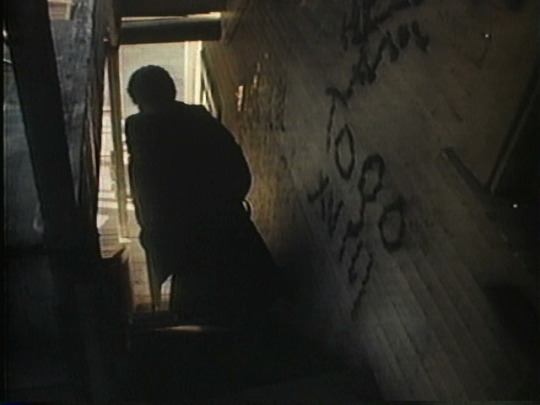
PAUL RETURNS HOME TO THE SOUTHSIDE OF SOME POOR AMERICAN CITY AND CAN’T CATCH A BREAK. NOBODY WANTS TO HIRE HIM BECAUSE HE’S A CRIPPLED VETERAN. WHEN PAUL GETS TIRED OF PLAYING PINBALL WITH THE OTHER JOBLESS MOTHERFUCKERS, HE BEGS HIS MAMA TO GIVE UP HER “KNEES MONEY” SO HE CAN RETURN TO SAIGON AND REUNITE WITH THE MOTHER OF HIS CHILD. MAMA HAS A COW, URGING PAUL TO FORGET ABOUT THAT CHAPTER IN HIS LIFE.
“No half-breed child of a Chinese slut is gonna throw out what I done spent my whole life scrubbing toilets for.”
-Mama
BUT PAUL CAN’T GIVE IT UP. THE BABY BOY, HE’S BEEN TOLD, HAS GREEN EYES JUST LIKE HIM, AND IT’S HIS MISSION TO FIND HIM.
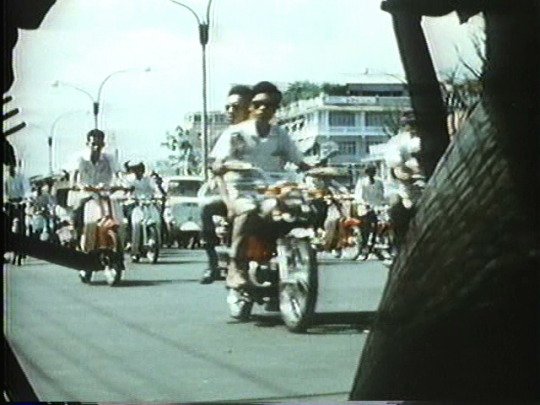
PAUL GETS HIS ONE-WAY TICKET BACK TO SAIGON, WHERE SOME GRAINY STOCK FOOTAGE IS INCORPORATED BY THE FILM’S EDITORS BECAUSE “GREEN EYES”, MADE AFTER SAIGON HAD CLOSED OFF TO THE WEST AND BEEN RENAMED HO CHI MINH CITY, WAS MOST LIKELY LENSED ON AMERICA-FRIENDLY SHORES LIKE THE PHILIPPINES.
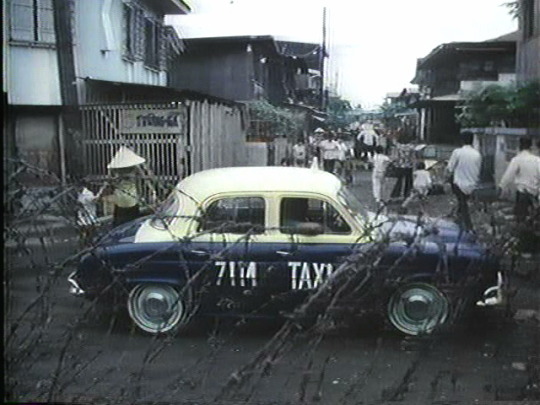
PAUL TAKES A CAB TO A SECTION OF SAIGON KNOWN AS “SOUL ALLEY”. THIS IS WHERE HE AND OTHER BLACK G.I.’s STAYED DURING R+R STINTS.

A BUNCH OF LITTLE THIRD-WORLD EXTRAS MATERIALIZE, KNOWING PAUL IS AN AMERICAN AND MIGHT HAVE PENCILS AND CHICLETS.

PAUL FINDS THE APARTMENT WHERE HIS BABY MAMA STAYS, BUT NO ONE’S HOME.
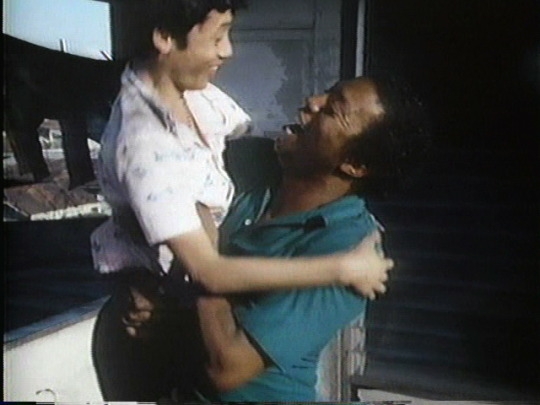
HE CHEERS UP WHEN HE’S GREETED BY HIS BABY MAMA’S COUSIN, FANG. THEY PROCEED TO DO A CONVOLUTED HANDSHAKE SLASH BOOGALOO THAT PAUL NO DOUBT TAUGHT THE LITTLE SLOPE LATE ONE NIGHT WHEN HE WAS HIGH ON REEFER.
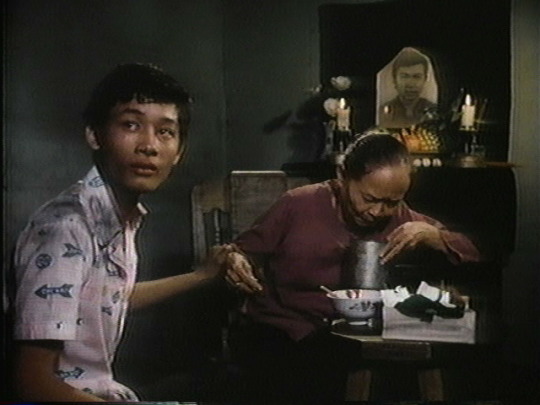
FANG INVITES PAUL IN TO SPEAK WITH MAMA-SAN, BUT SHE’S TOO DISTRACTED TRYING TO FISH A BUFFALO NICKEL OUT OF HER TEA TO ANSWER ANY OF PAUL’S LINE OF QUESTIONING.

TROUBLED AND RESTLESS, PAUL TAKES A WALK TO CLEAR HIS HEAD. HE FINDS A PARK AND SITS DOWN. ALMOST IMMEDIATELY, PAUL GETS PROPOSITIONED BY A FRIENDLY LADY OF THE NIGHT. HE TELLS HER HE’S TOO BROKE TO FUCK; IF HE NEEDS A TUGJOB LATER, HE’LL DO IT HIMSELF.

WHEN THE CHICK SPLITS, A LITTLE KID COMES OVER AND TRIES TO HUSTLE PAUL, PRETENDING THAT HE’S SEEN PAUL’S CHILD. THEN HE STEALS PAUL’S ARMY JACKET. PAUL CHASES HIM, BUT WITH HIS BAD LEG HE CAN’T CATCH UP.

THE NEXT DAY, PAUL BEGINS CANVASSING THE UNDERBELLY OF SAIGON FOR HIS BABY MAMA. HE STOPS AT AN ORPHANAGE, WHERE HE MEETS THE DIRECTOR, AN ENGLISHWOMAN (RITA TUSHINGHAM, THE KNACK... AND HOW TO GET IT) WHO OFFERS HIM ARMY RATION LEMONADE.

SHE GIVES PAUL THE SKINNY ON ADOPTION IN SAIGON, A SOUL-CRUSHING MASS OF RED TAPE THAT MAKES AMERICA’S SYSTEM LOOK CIVILIZED.

MISS RITA ALSO TELLS PAUL THAT HIS SON WAS MOST LIKELY ABANDONED BECAUSE OF HIS BEING PART BLACK. TO KEEP THE CHILD WOULD HAVE BESET THE MOTHER WITH A FAR MORE TRICKY STANDING IN VIETNAMESE SOCIETY.
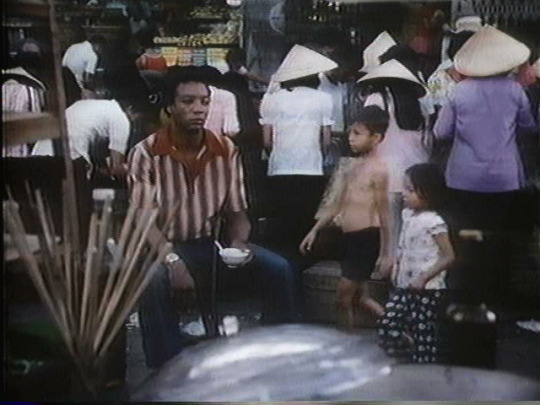
AT THIS POINT, PAUL WANTS TO BURY HIS HEAD IN A BOILING POT OF PHO AND PEACE OUT. HE DISTRACTS HIMSELF WITH A COMBAT FLASHBACK, THE CLASSIC DRIVING-DOWN-SOME-COUNTRY-ROAD-AND-HITTING-A-LANDMINE NUMBER.

THREE-QUARTERS OF THE SPECIAL EFFECTS BUDGET DOWN THE TUBES.

PAUL NOTICES THE PALLETS OF CHEAP CLOTHING IN THE MARKETPLACE ARE ALL MARKED WITH THE SAME STENCIL.

PAUL VISITS ONE OF THE ORPHANAGES MISS RITA MENTIONED. HE FINDS AN OVERCROWDED ROOM AND A BUNCH OF UNSUPERVISED KIDS TEARING THE PLACE APART.
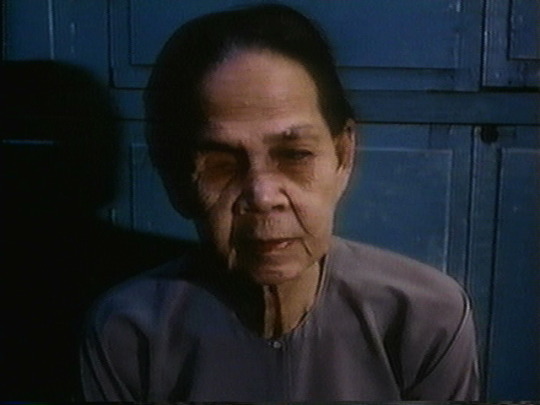
WHEN PAUL APPROACHES THE ADULT IN CHARGE, HE FINDS HE’S SPEAKING TO A FUCKING BLIND PERSON. DAMN. SUBTLE.
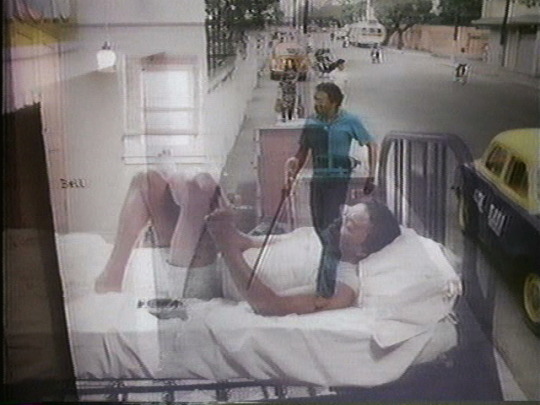
PAUL WRITES A LETTER TO HIS MAMA, TELLING HER ABOUT THE THINGS HE’S SEEN IN THE ORPHANAGES, AND THE KIND OF POVERTY THAT DOESN’T COMPARE TO ANYTHING HE KNOWS BACK IN AMERICA.
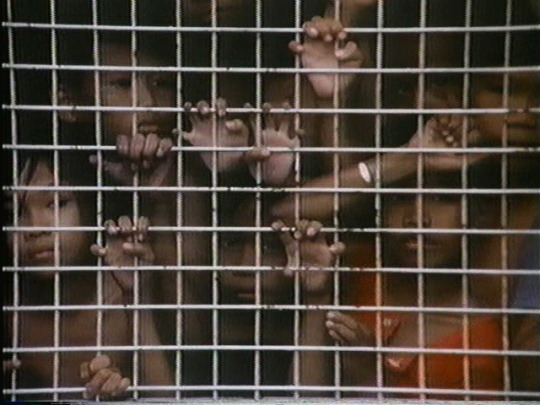
THIS IS THE PART WHEN “GREEN EYES” ESSENTIALLY BECOMES AN ADVERT FOR UNICEF.
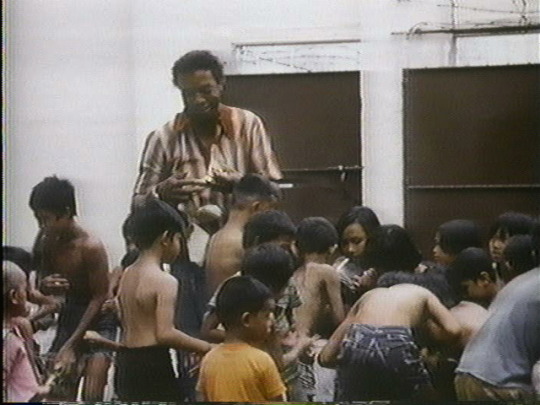
PAUL BUYS A BUNCH OF BANANAS AND FEEDS THE LITTLE MONKEYS. HE STARTS SPENDING MORE TIME WITH THEM. IT GIVES HIM A SENSE OF PURPOSE.

THEN HE RUNS INTO THE LITTLE FUCKER WHO STOLE HIS ARMY JACKET. THE KID, CALLED TRUNG, KNOWING HE’S GOT ABOUT TWO SECONDS TO LIVE BEFORE PAUL’S BIG BLACK FISTS COME RAINING DOWN, PROMISES TO HELP PAUL FIND HIS SON.

“Kid, you ain’t worth the skin on my knuckles. Where he at?

TRUNG TAKES PAUL TO A BAR TO MEET A FIXER, ONE OF THOSE GUYS WHO KNOWS PEOPLE AND HOW TO PROCURE THINGS.

THE GUY TURNS OUT TO BE PAUL’S OLD ARMY BUDDY, MIAMI BEACH. THIS CAT FAKED HIS OWN DEATH TO GET OUT OF THE SHIT, MAN. NOW HE’S BLOWING PAUL’S MIND, TALKING ALL KINDS OF TALK ABOUT HOW SAIGON’S A GAS -- YOU CAN GET ANYTHING YOU WANT. PICK YOUR POISON.

MIAMI BEACH SENDS PAUL AND THE KID TO THE COUNTRYSIDE TO RENDEZVOUS WITH THE RICE PADDY CONTINGENT.
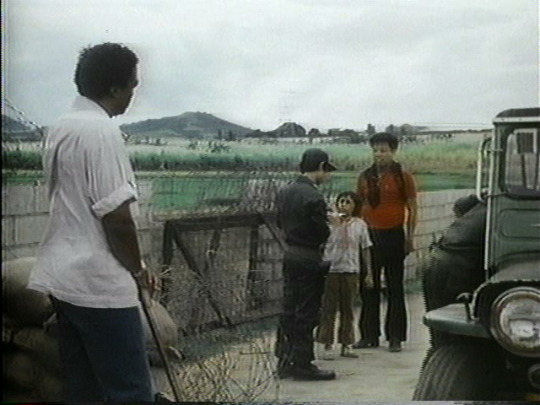
ON THE WAY, THEY HAVE TO BRIBE SOME CHECKPOINT GOONS WITH OLD LOTTERY TICKETS TO GET THROUGH.
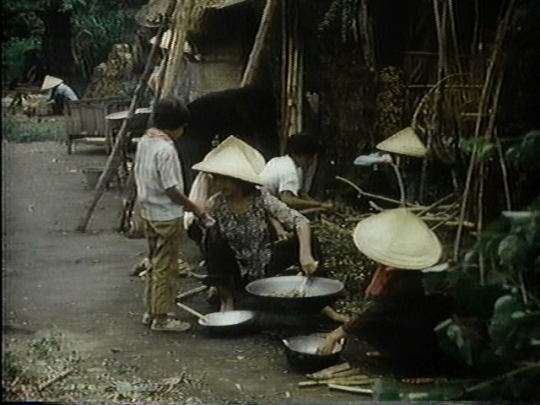
WHILE TRUNG GOES DOOR TO DOOR, PAUL LAYS BACK IN THE CUT AND REALIZES HE KNOWS THIS VILLAGE INTIMATELY.
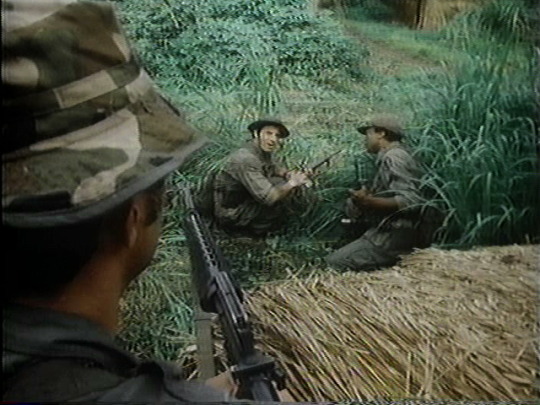
ONCE UPON A TIME, HIS PLATOON BURNED IT TO THE GROUND SO THEY COULD BEAT A RIVAL SQUAD ON BODY COUNTS AND WIN A CASE OF BUDWEISER.

MORE OF THE SPECIAL EFFECTS BUDGET IN ACTION.

OBLIGATORY “NOOOOOOO” SHOT.
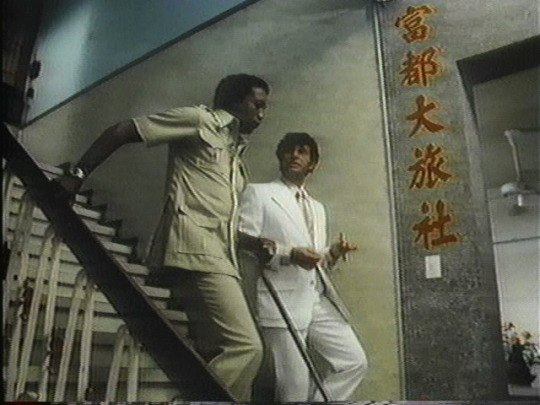
PAUL’S PRETTY BUMMED OUT WHEN HE RETURNS FROM THE COUNTRYSIDE. MIAMI BEACH DRAGS HIM TO A PARTY AT SOME RICH BROAD’S HOUSE, SELLING IT AS AN IN TO THE EX-PAT BREAD THAT WILL HELP HIM FIND GREEN EYES.
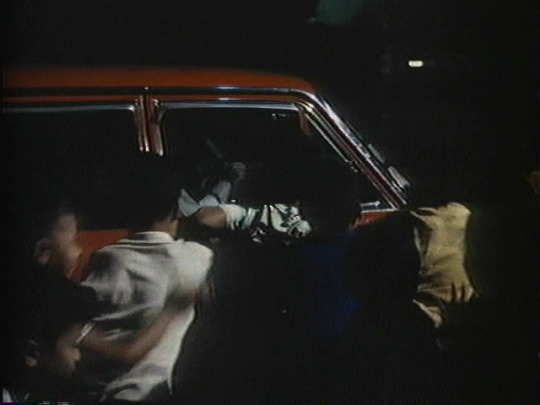
ON THE RIDE OVER, MIAMI’S CHERRY BENZ GETS ATTACKED BY SOME HUNGRY OLVIDADOS.

THE PARTY’S PRETTY HAPPENING. PAUL CAN’T GET OVER THE HORS D’EUVRES SPREAD, ENOUGH FOOD THE TO FEED ALL THE ORPHANS IN SAIGON. OH, THE IRONY! AND... AND LOOK AT THOSE JUGS! JESUS! ILSA, ILSA!

EVEN THE BUDDHISTS ARE SATED.
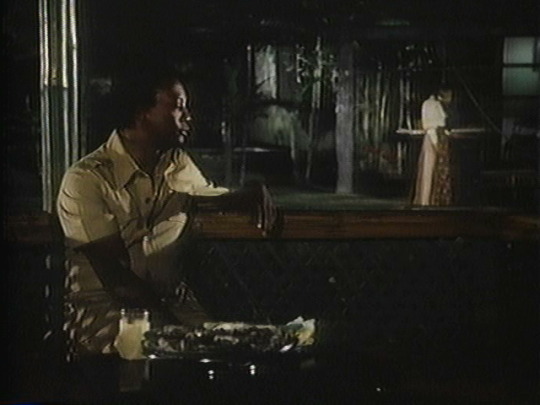
PAUL ISN’T HAVING ANY OF IT. ACROSS THE LAWN, HE RECOGNIZES MISS RITA FROM THE ADOPTION AGENCY HAVING A SIMILARLY TERRIBLE TIME. THEY CONSPIRE TO STEAL SOME TRAYS OF FINGER FOOD AND FEED THE LITTLE MONKEYS OUTSIDE THE GATE.

THIS PISSES OFF THE PARTY HOST SO MUCH, PAUL AND RITA ARE ASKED TO LEAVE.

THEY WALK THE STREETS UNTIL CURFEW. WHEN THE CLOCK STRIKES TEN, RITA SAYS SHE HAS TO GET BACK TO THE ORPHANAGE AND PUT THE BABIES TO BED. PAUL ASKS IF HE, TOO, CAN HELP PUT RITA’S BABIES TO BED. I HAVE NO IDEA WHAT BABIES PAUL IS REFERRING TO, OR IF, IN FACT, HE MEANS RITA’S PRIVATE PARTS.

PAUL SPENDS SOME QUALITY TIME AT RITA’S ORPHANAGE, WHERE HE TEACHES SOME OF THE KIDS HOW TO PLAY BASEBALL. RITA TELLS PAUL THE SAD NARRATIVE OF A STREET KID’S LIFE IN SAIGON, ESSENTIALLY THAT HE LIVES ON GARBAGE UNTIL HE’S FIFTEEN, WHEN HE JOINS THE ARMY TO ESCAPE THE STREETS. FIFTEEN?! THIS GIVES PAUL A NEW PERSPECTIVE ON TRUNG AND HIS ILK.

LATER THAT NIGHT, AFTER THE CHILDREN HAVE BEEN PUT TO BED, PAUL AND RITA SMOKE SOME OPIUM AND RAP INTO THE WEE HOURS ABOUT GREEN EYES AND ALL THE COLORS IN THE SKY, AND HOW LIFE CAN BE SO FLY WHEN YOU’RE HIGH ON THIS MAGIC CARPET RIDE.

“Do you fancy a shag, Othello?”

THE NEXT DAY, TRUNG COMES OVER FOR LUNCH.

HE STUFFS HIS FACE WITH PAPAYA AND ALMOST FORGETS TO TELL PAUL THAT MIAMI BEACH HAS MANAGED TO LOCATE PAUL’S EX OLD LADY, LEI-CHAN.

“The hell you say?! Put that fruit down and talk to me, boy. That damn papaya can wait, but my son, goddamit, my son can’t...”
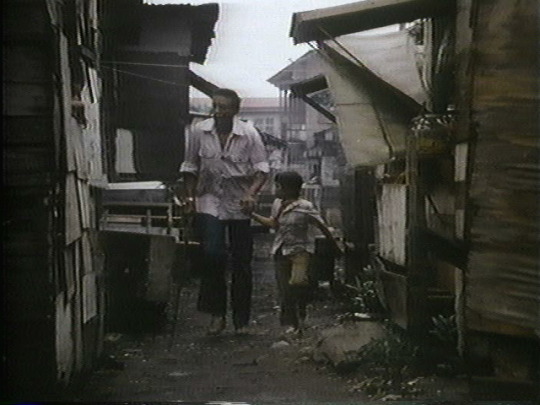
TRUNG TAKES PAUL TO A HELLISH MARINA WHERE INSIDE EVERY CARDBOARD SHANTY SOMEONE’S EITHER SHOOTING A SNUFF FILM OR PERFORMING A CAT ABORTION.
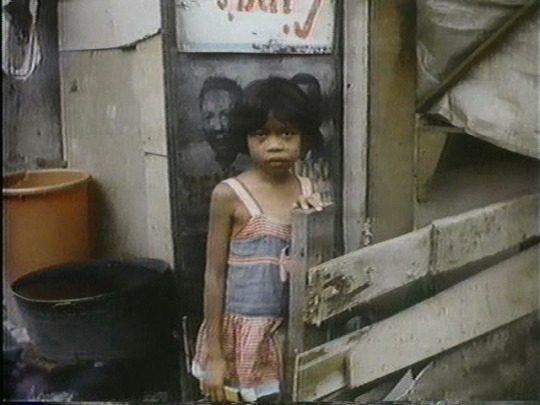
YES, FRIENDS, BY DONATING JUST FIVE DOLLARS A MONTH, YOU CAN ENSURE THAT A BEAUTIFUL CHILD LIKE THIS ONE RECEIVES THE BASIC FOOD AND NOURISHMENT IT REQUIRES TO SUBSIST IN THE HARSH CONDITIONS OF LIFE IN THE DEVELOPING WORLD.

THEY FINALLY GET TO THE TENT WHERE LEI-CHAN IS BELIEVED TO BE. PAUL TELLS TRUNG TO WAIT OUTSIDE.

IN THE BOOM-BOOM ROOM, PAUL DISCOVERS HIS EX. SHE LOOKS TIRED AND FUCKED-OUT. A BABY’S CRYING IN THE CLOSET. COULD IT BE?

SWING LOW... SWEET CHARIOT... NOPE, IT’S SOMEBODY ELSE’S BABY. A PILOT FOR AIR PHILIPPINES, LEI-CHAN EXPLAINS. THE DUDE WAS SUPPOSED TO SEND FOR THEM THE PREVIOUS WEEK BUT GOT TIED UP IN A MONSOON.

“Green Eyes is dead. I am sorry. He get fever. That was that. And Paul, if you like to feel better, I give you fucky fuck for ole time sake.
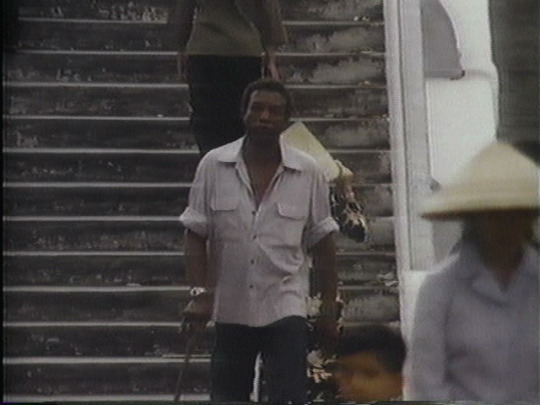
PAUL OPTS OUT OF THE FUCKY FUCK AND LEAVES THAT BOOM-BOOM ROOM A CHANGED MAN. PART OF HIM IS DEAD, A MUCH BIGGER PART THAN WAS ALREADY DEAD, BUT, MORE IMPORTANTLY, PART OF HIM IS NOT DEAD.

HE TAKES THE TOY HE WAS PLANNING TO GIVE GREEN EYES, ONE OF THOSE DISTURBING WIND-UP MONKEYS THAT PLAY THE CYMBALS, AND BURIES IT IN THE GROUND, UPSIDE DOWN. SEMPER FI!

PAUL STOPS BY MISS RITA’S TO SAY GOODBYE. HE ASKS IF SHE’S SEEN TRUNG. SHE HASN’T, BUT WAS UNDER THE IMPRESSION THAT THE BOY BELIEVED PAUL HAD FOUND HIS SON AND NO LONGER HAD ANY USE FOR TRUNG. ALTHOUGH HE’S WORRIED HE’LL MISS HIS FLIGHT BACK HOME, PAUL DECIDES TO LOOK FOR TRUNG AND SAY GOODBYE. HE HAILS A TAXI AND TAKES IT TO THE MOO-GOO-GUY DISTRICT.
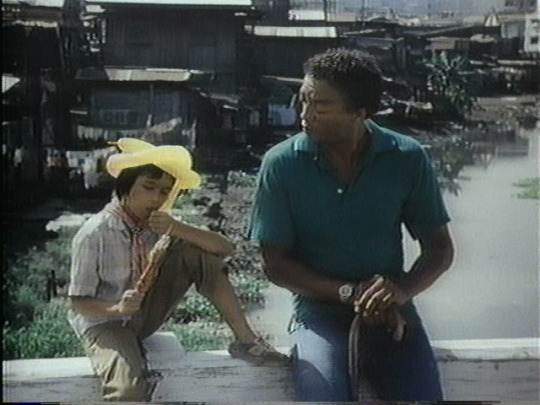
TRUNG APPEARS SITTING ON A BRIDGE, WEARING A BALLOON ON HIS HEAD AND EATING WHAT LOOKS LIKE GRILLED PUPPY INTESTINES ON A STICK. HE ASKS ABOUT GREEN EYES. PAUL TELLS HIM THE TRUTH, THE BABY TRUNG HEARD WAS SOMEBODY ELSE’S.
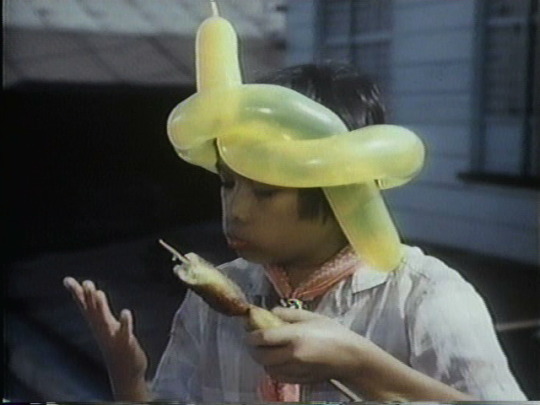
“I think I have the rest of my day to hear this American story, but I only have three more seconds to finish this fried plantain before it congeals and turn to athlete’s foot.”
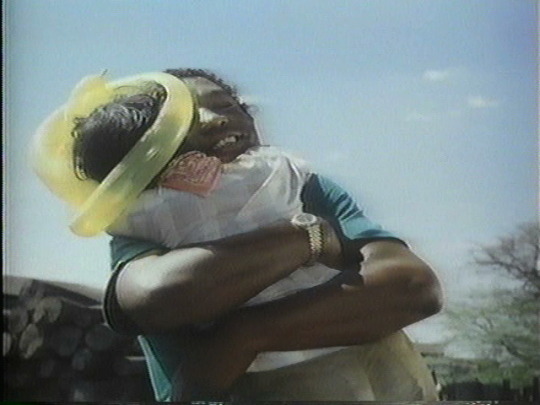
“Say, Trung, man, I just missed my plane because of you, man. So what’cha doin’ with the rest of your life? How about we catch a ferry out of this here and go exploring, man. I hear that Malay pussy is outta sight. Like, they know how to take care of a brother. And after that, we’ll set sail for Brazil. Man, the bitches down there ain’t even got hair... down there.”

THE END.
18 notes
·
View notes
Text
6 tips to plan your dental vacation in Vietnam
Travel arrangement for your dental vacation in Vietnam
Due to the thriving development of dental tourism in Vietnam, more and more dental tourists from developed countries such as Australia and New Zealand travel to Vietnam for dental care. Understanding the difficulty of planning a dental vacation, Lotus Dental Travel has summarized a step-by-step guide to walk you through every detail of your dental vacation planning process.After following these explicit steps, you can make a perfect plan for your dental vacation.
Plan ahead: Treatment schedule and travel time
First of all, you need to plan your appointments with your dentists in Vietnam. Once you have your treatment plan, you can start planning your dental vacation in Vietnam.
You should expect how long your stay is and if you want to expand your treatment time to explore more about Vietnam. There is an easy way to find out the answer. Making a list of tourist attractions that you desire to visit and then, note down your itinerary. Vietnam has plenty of beautiful tourist attractions such as Hanoi, Da Nang, Nha Trang, Ho Chi Minh City, etc. You may want to combine them with your dental vacation. If you want to discover Vietnamese culture and art, you may want to put Ha Noi and Da Nang on your list. These two beautiful and charming cities are the most visited sites in Vietnam, not only because of their ancient beauty but also by the richness and diversity of Vietnamese street cuisine. If you are a sunshine seeker, Nha Trang must be on top of your list. Its pristine beaches and fresh seafood will give you once-in-a-life-time experiences. Meanwhile, Ho Chi Minh city is the best place for those who love noises and modern life with the hustling pace of life.
Most dental tourism destinations in Vietnam have various interesting outdoor and indoor activities that you could enjoy: sightseeing, sports, spa, and wellness, etc.
Monetary arrangement
Take one or more debit cards or credit cards (for the treatment) so you don’t have to worry about carrying cash around and in case one credit card won’t work. It might be a little more expensive to use cards on your trips because each transaction would require you to pay a little extra money due to the exchange rate.
However, for some high-cost treatments, it might be more economic to bring cash because it could save you lots of money. If bringing foreign currencies or traveler’s cheques, this can be converted to VND cash at local banks on any working days from Monday to Friday. Or you can exchange at Jewelry shops for the best rate. Each individual, upon entry or exit through Vietnamese international border gates by valid passports, can carry cash up to USD5,000 (or other equivalent foreign currency) or VND5 million without the need to declare to the immigration office or customs office. Foreign currencies with the amounts exceeding USD5,000 – (or equivalent) must be declared on arrival. Read Vietnam Custom regulations of currency import to know more details.
Mastercard, VISA, American Express are the most popular accepted in Vietnam. However, you need to inform your credit card company the estimated amounts and transactions that will be processed in Vietnam prior to travel as many credit card companies (especially US, Europe, and Australia) do require overseas activation for security fraud. The daily currency exchange rates from VND to your home currency are determined by your credit card companies. Exchange rates may vary for different credit cards and banks. Certain banks do charge service fees or other charges for overseas credit card transactional use that you may like to check prior to its use overseas.
Passport and visa arrangements
There’s no medical tourism visa in Vietnam so you could register for a tourist visa. For a trip under 15 days, citizens from Europe, such as Denmark, France, Germany, Italy, UK, don’t need to apply for a visa.
However, if you are from Australia, New Zealand, the US or Canada, you need to apply for a visa. The single-entry stamping fee is US$25, a multiple-entry stamping fee is US$50. The process is straightforward: you fill out an online application form and pay the agency the fee (around US$20). You’ll then receive by email a VOA approval letter signed by Vietnamese immigration that you print out and show on arrival, where you pay your visa stamping fee in US dollars, cash only. Make sure you have your non-expired passport for at least six months and two blank pages for visa stamp.
Flight booking
Tourists from Australia, there are direct flights to Ho Chi Minh city. From Russia, China, Korea, there are direct flights to Nha Trang. If you depart from Hongkong and Singapore, there’re direct flights to Hanoi, Ho Chi Minh, Da Nang.
There are many airlines with different prices and services in Vietnam, namely Vietnam Airlines, Vietjet Air, Bamboo Airway, etc. Vietnam Airlines, the first airline in Vietnam, has the best quality in the business with a wide range of both international and domestic airlines. Meanwhile, Vietjet air is the first airline to offer cheap flight tickets.
Vietjet Air is widely used to travel domestically which covers all the most visited ones in Vietnam. You should check the weight limit for your luggage if you do not want to pay for the extra weight. To save up your time, Flights – Google is the most convenient booking platform where you can search and compare flight ticket prices all around the world, so you can choose the best-suited flight tickets.
Avoid delay in booking
For complicated procedures the doctor should finalize your treatment plan at least 1 month prior to the first appointment. Once you get a hold of the treatment plan, book your flights as soon as possible. Last minute booking could cost you a fortune.
Check cancellation policy and travel insurance
Make sure you know what you’re covered from if there’s a reason you can’t make it to your flight.
Vietnam government doesn’t require international tourists to purchase travel insurance, but you should purchase one to protect yourself from situations such as flight cancellation or accidents.
You could also learn more about some dental tourism insurance policies, which may cover some risks of your travel, treatment and retreatment. Some travel insurance providers such as Go Insurance offer dental tourism packages for dental tourists. Dental tourism insurance covers trip cancellation, emergency overseas dental treatment, additional transport and accommodation, return travel and accommodation remedical dental treatment.
Ground transportation arrangements
You could ask the dental clinic receptionist or patient coordinator from a dental travel facilitator in Vietnam to book for local transportation for you. Some clinics also offer airport pickup and a dropoff for international patients.
There are popular booking platforms in Vietnam such as Grab, GoViet, and Be, which are used widely like Uber in the US. You can book a car or motorbike taxi via these apps for short waiting time and a cheaper price in comparison to a traditional taxi. However, as people just need to register an account to become the drivers on these platforms, they are not under the strict control of any competent group. Therefore, we still highly recommend you a traditional taxi to avoid unexpected incidents.
Accommodation
Most dental tourists opt for 4-star and 5-star hotels. For 5-star experience in Vietnam, expect to pay about $75 – $100 per day at a minimum. Meanwhile, most 4-star hotels have prices range from $50 to $70, and three-star hotels that are acceptable would be around $30-$50 per night. Do a small comparison between top-quality hotels in Asian countries, you will see those in Vietnam are potential candidates for the best quality hotels with affordable prices.
For long treatment procedures such as All-on-4, you could book apartments (Airbnb, Agoda, Luxstay), which could save you lots of travel expenses. Normally, you can discount at different levels: 31%, 55%, to name but a few. Besides, online reviews are very helpful for decision making and could totally increase the social proof for accommodation. Different review-platforms have their own methodology of collecting reviews. Some are very strict in terms of review verification, meanwhile, some are quite “easy-going”. Find yourself trustworthy review-platform such as Tripadvisor.
For the sake of customers, Lotus Dental Travel helps you reserve superior-quality rooms hotel and resort. There are state-of-art hotels as listed below, we suggest you consider them and choose the one that wins your heart.
Ha Noi
Lotte Hotel Hanoi (5-star)
Apricot Hotel (5-star)
Hanoi La Siesta Hotel Trendy (4 stars)
Da Nang
Hyatt Regency Danang Resort & Spa (5-star)
Hotel Royal Hoi An – MGallery (5-star)
Pavilion Hotel (4-star)
Ho Chi Minh City
Hotel Nikko Saigon (5-star)
Liberty Central Saigon Citypoint (5-star)
EdenStar Saigon Hotel & Spa (4-star)
Nha Trang
Vinpearl Resort & Spa Nha Trang Bay (5-star)
Hotel & Spa Sheraton (5-star)
Havana Nha Trang Hotel (4-star)
The post 6 tips to plan your dental vacation in Vietnam appeared first on Dental.
https://ift.tt/39MxWIC from WordPress https://lotusdentaltravel.com/6-tips-to-plan-vietnam-dental-vacation/
0 notes